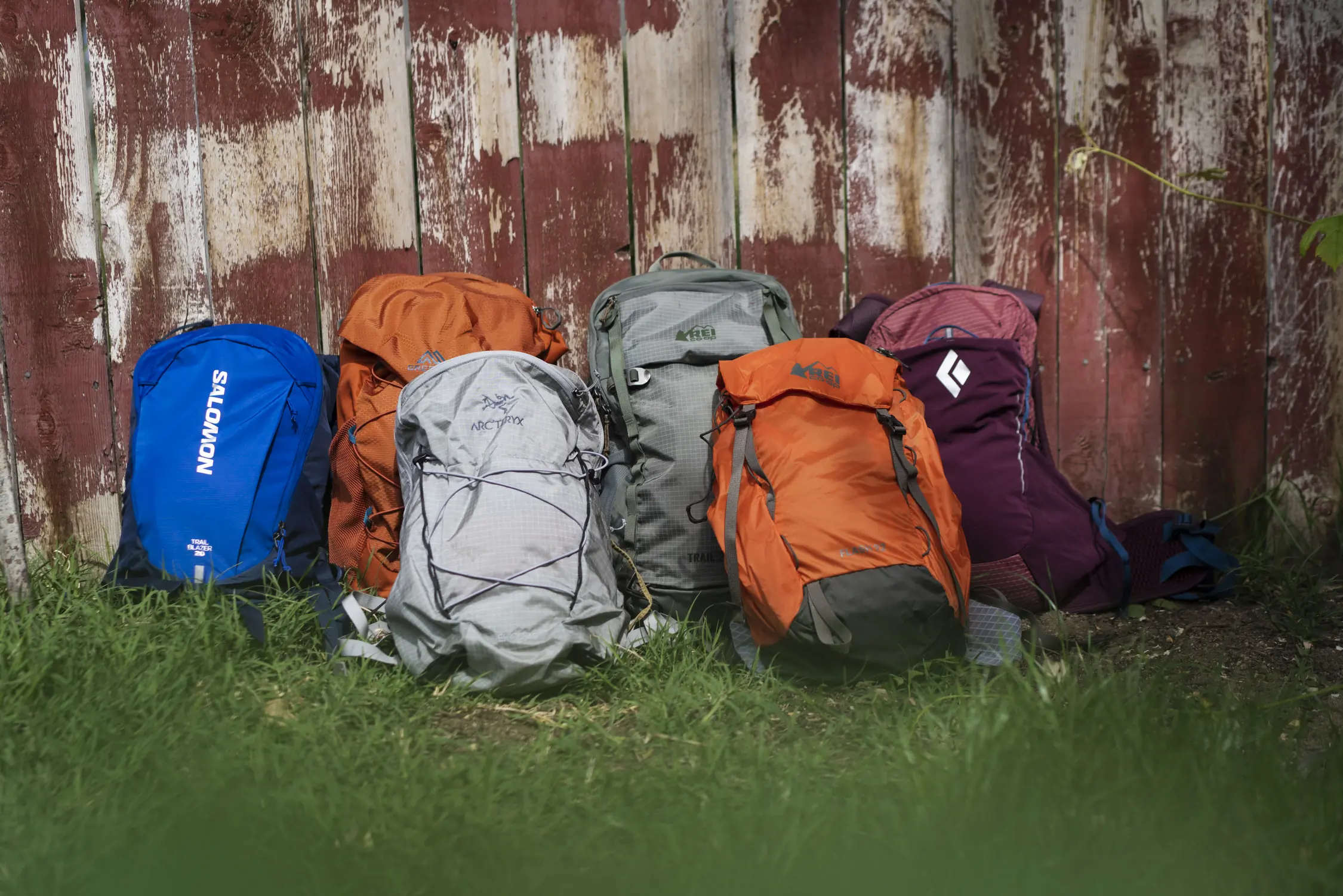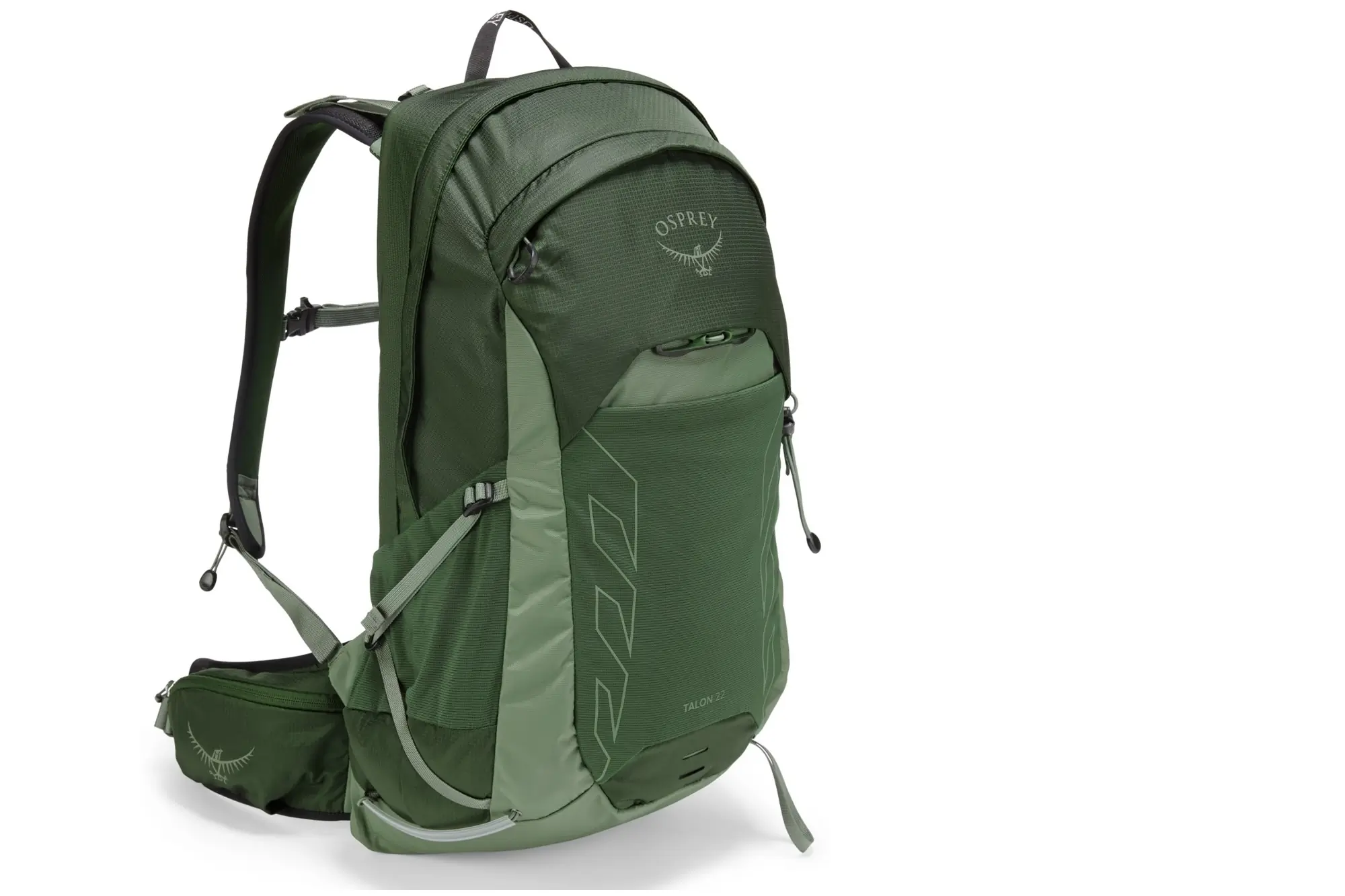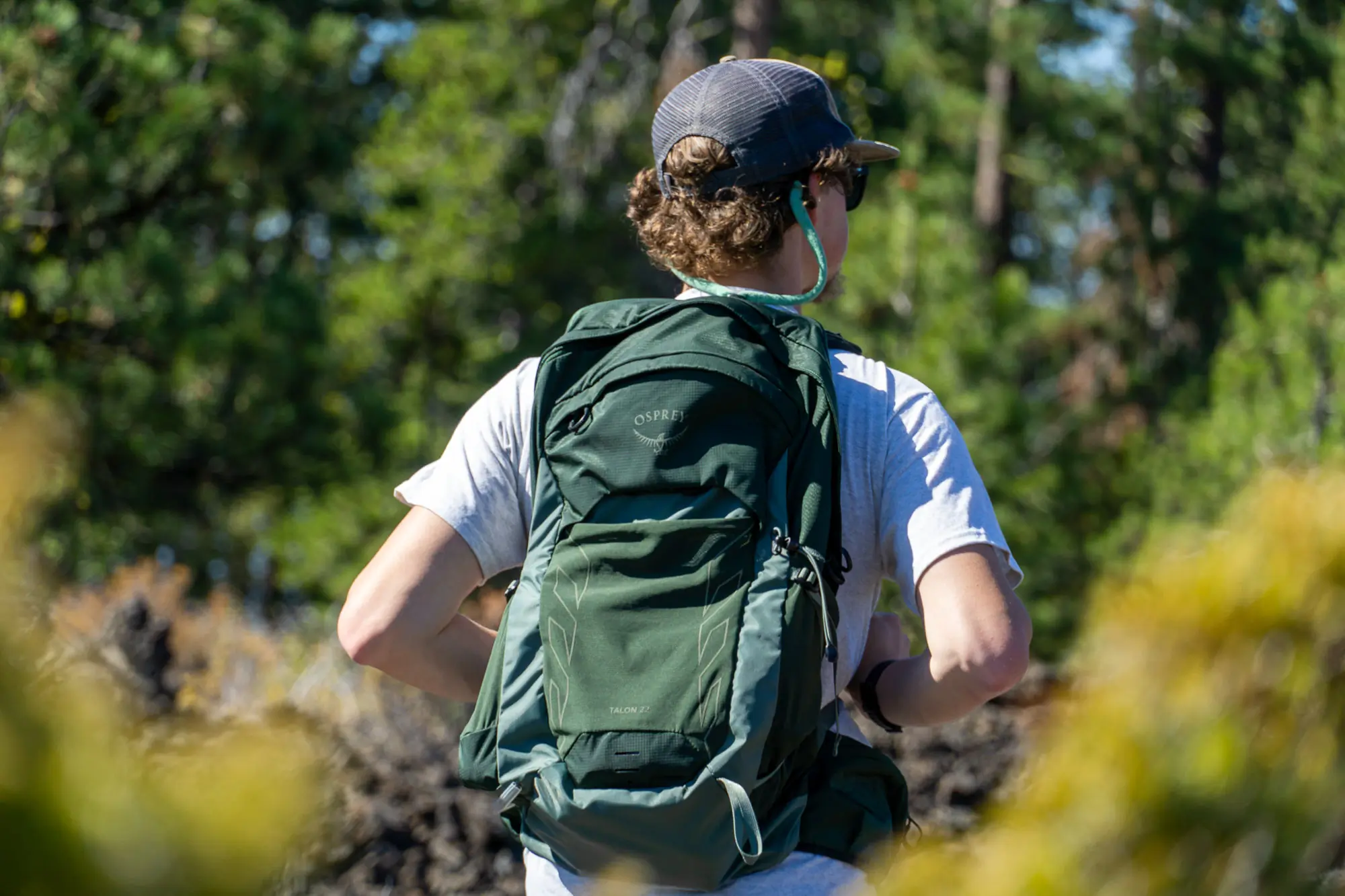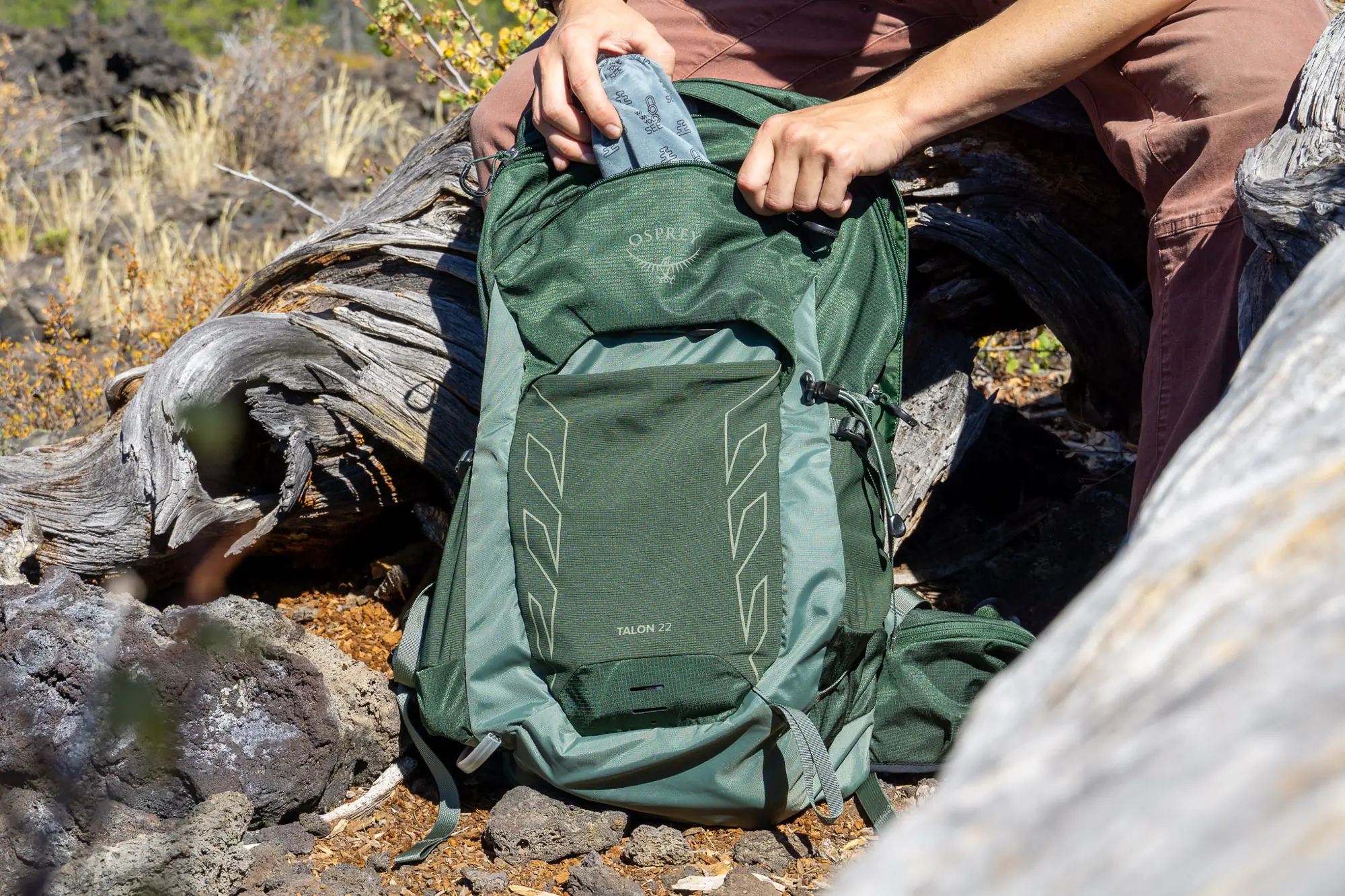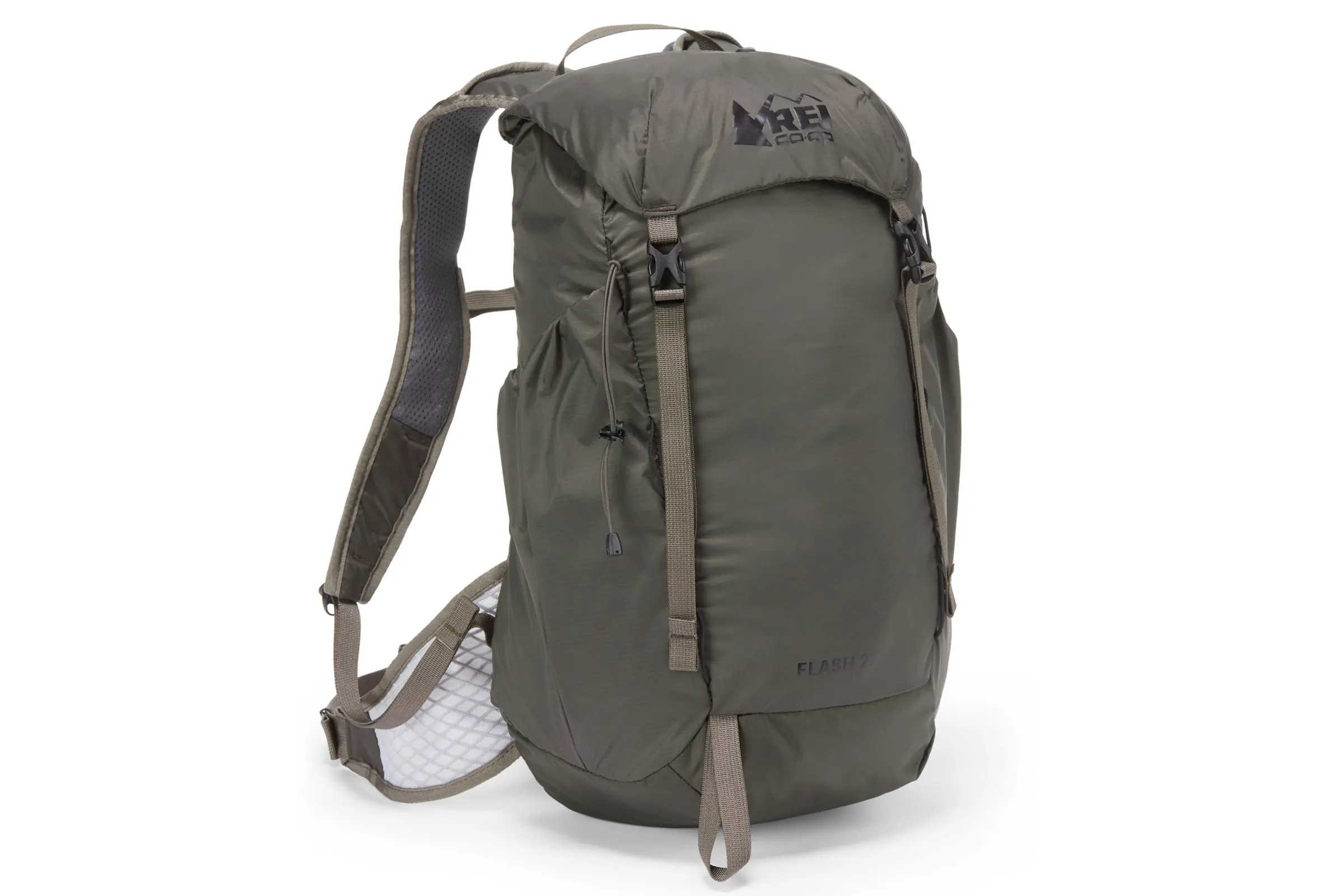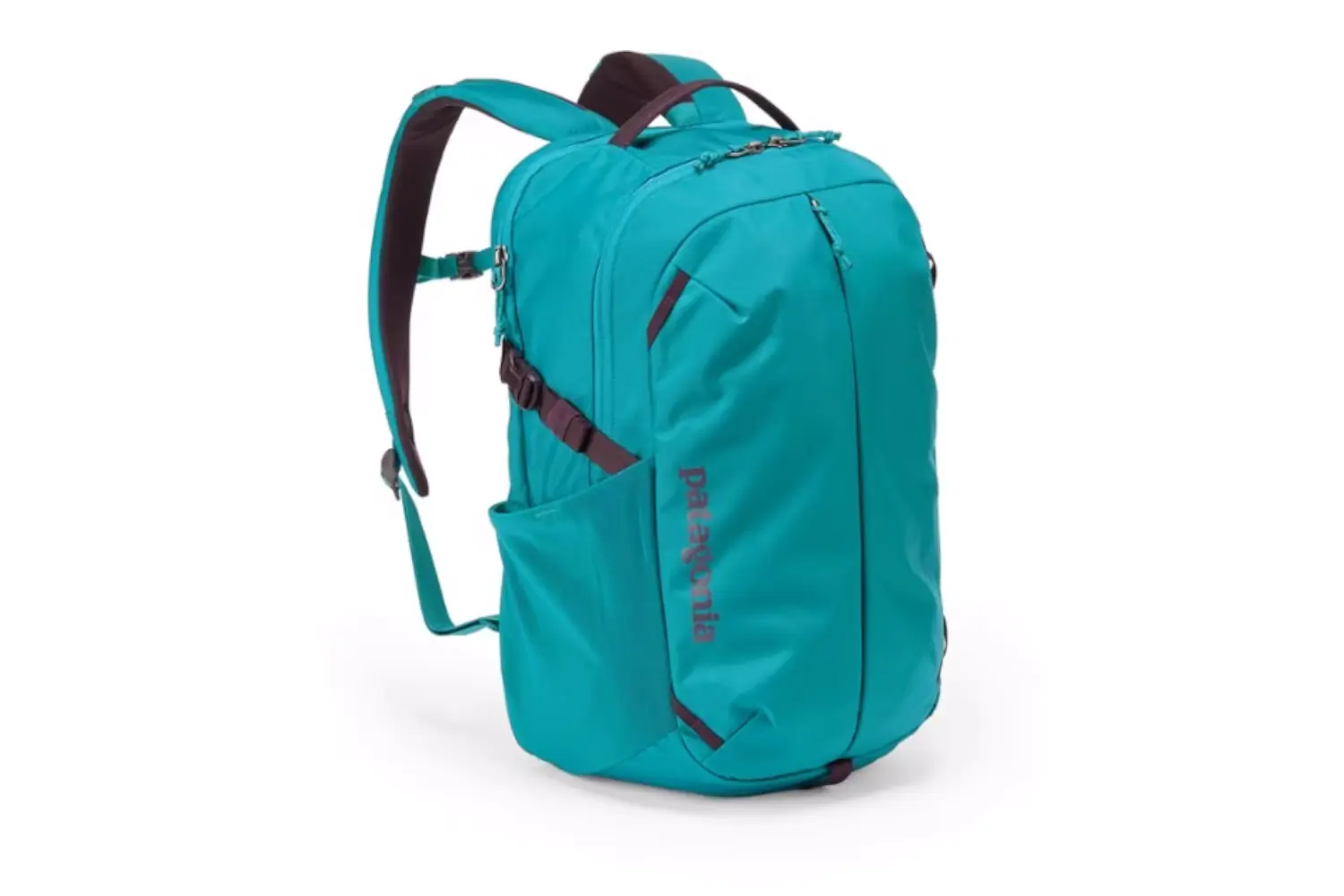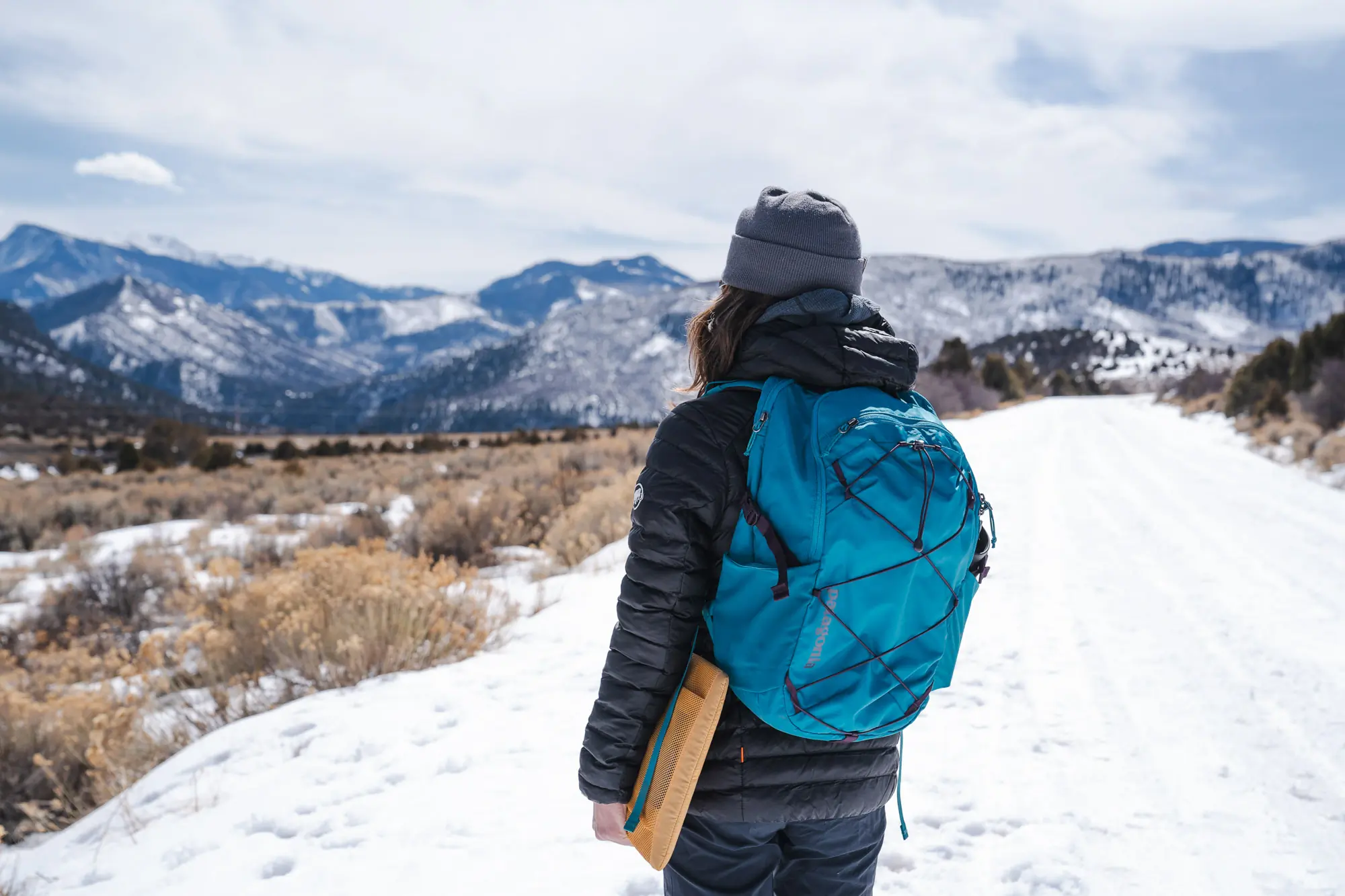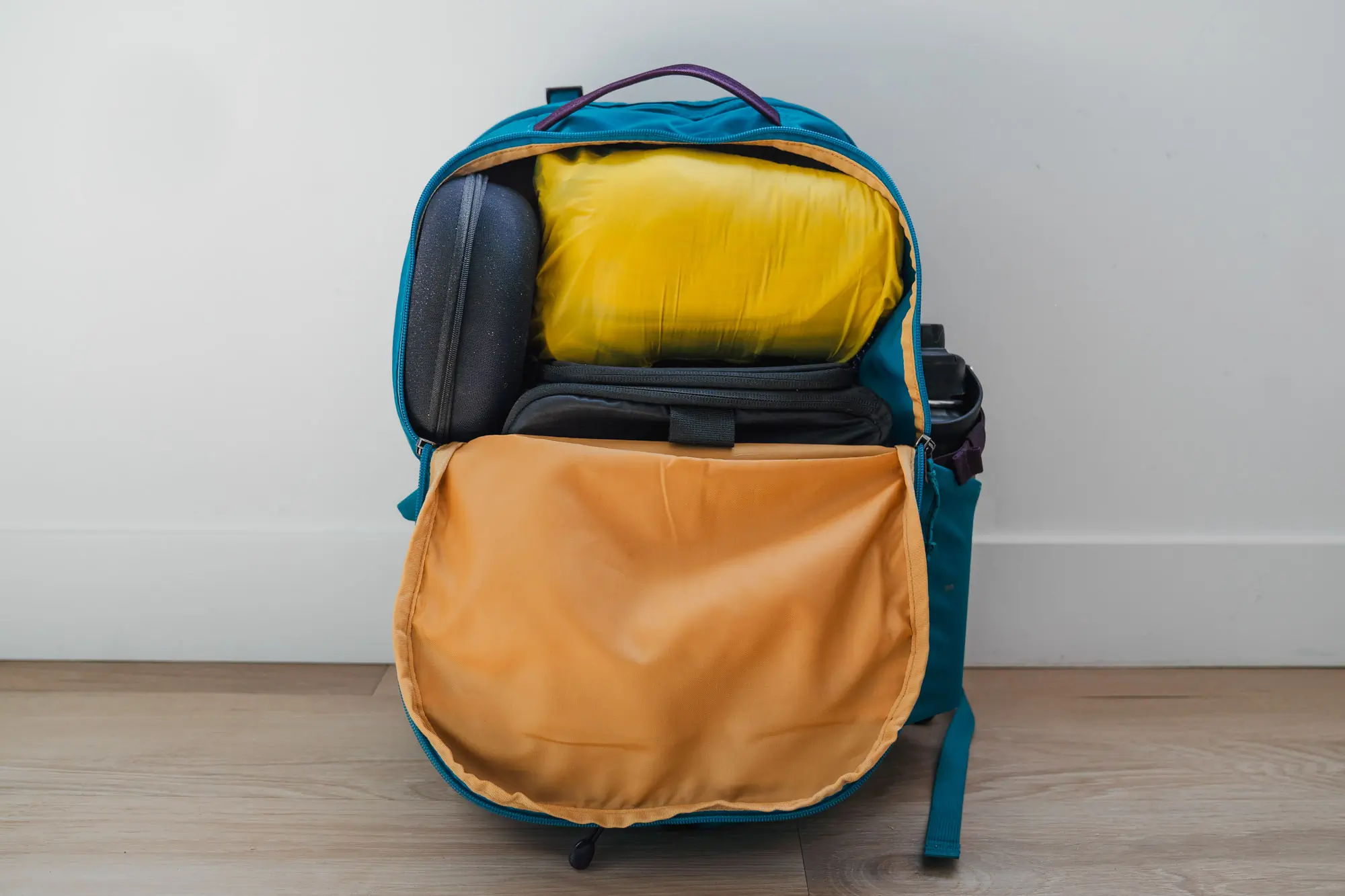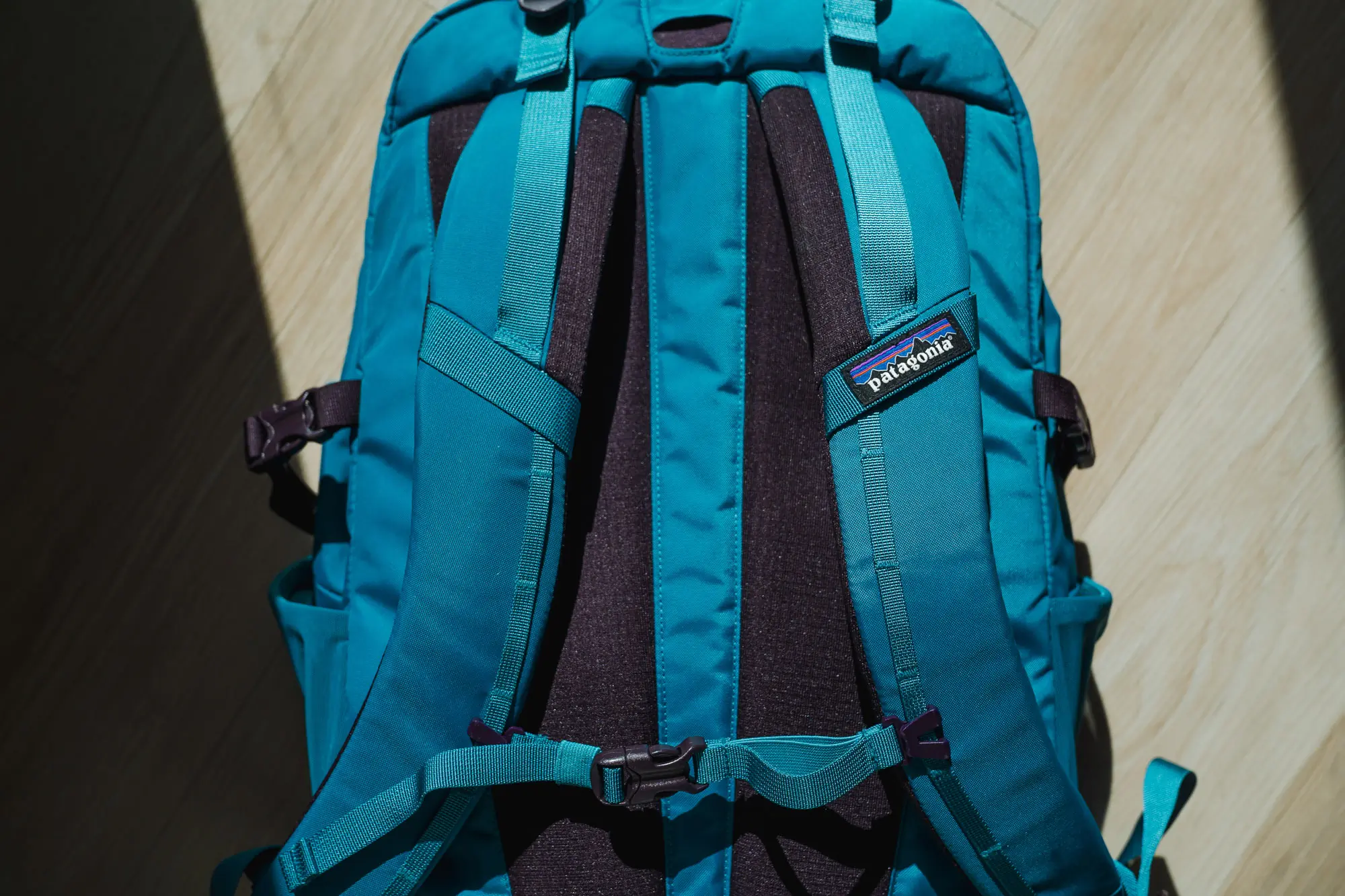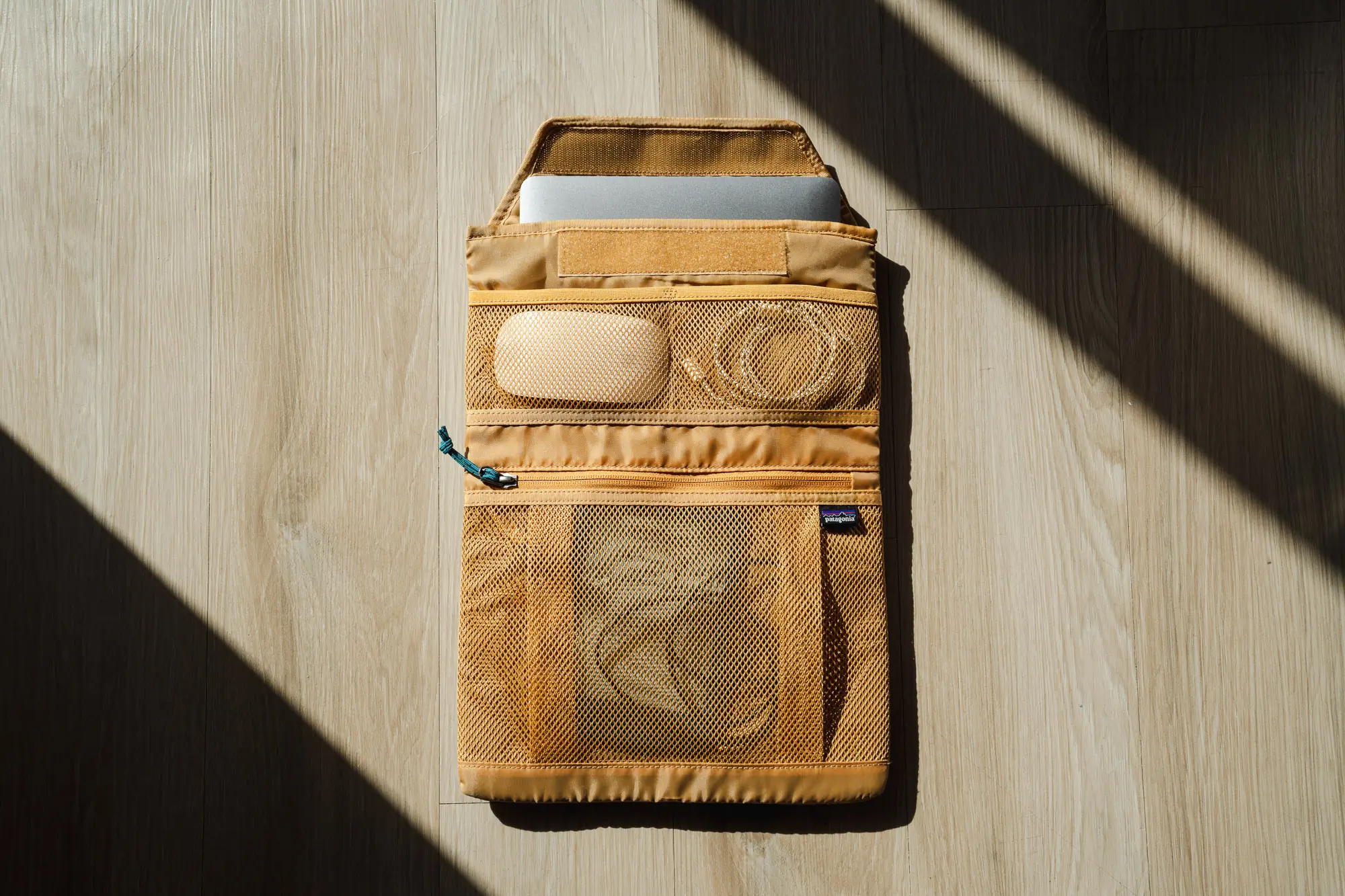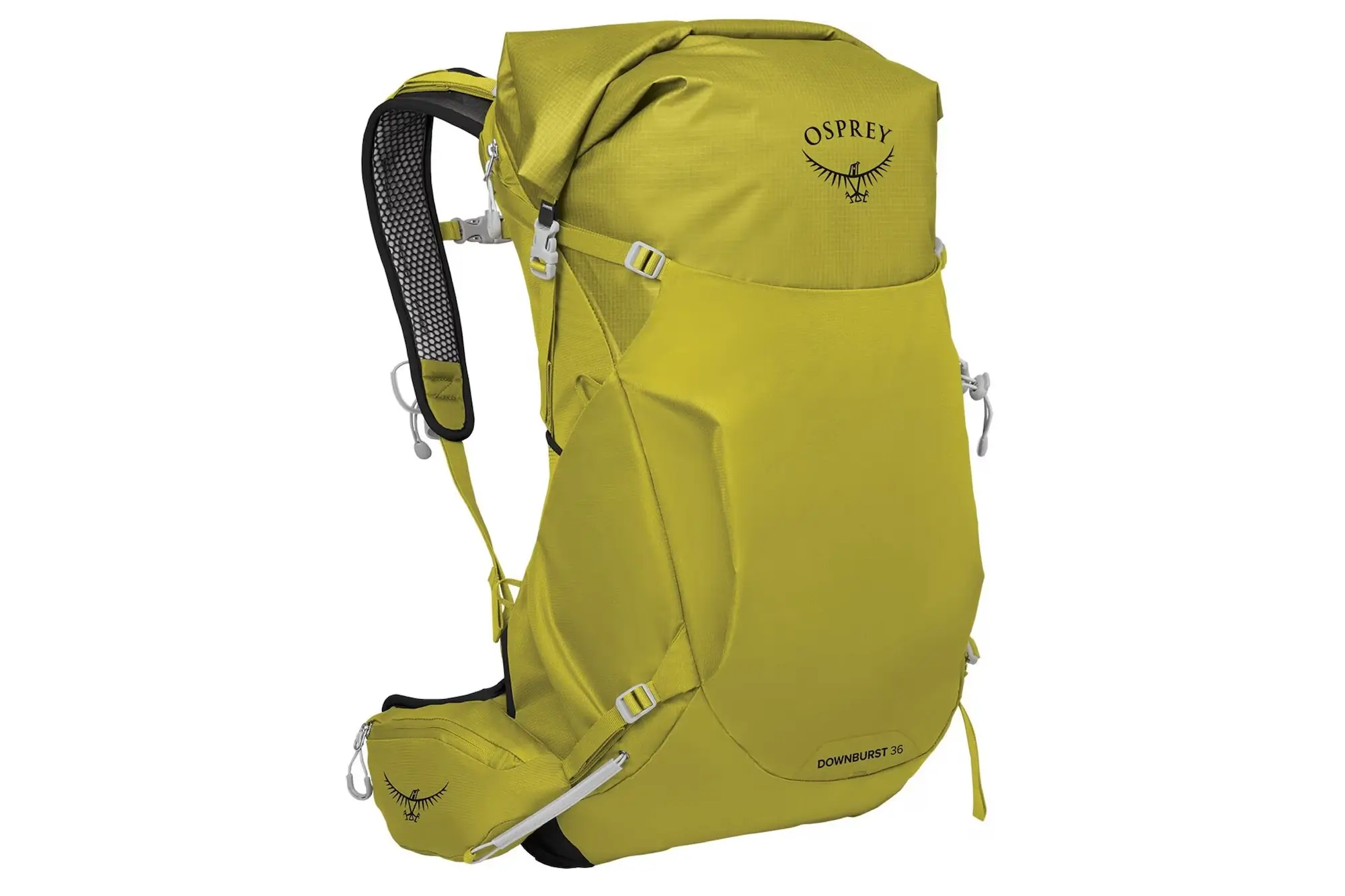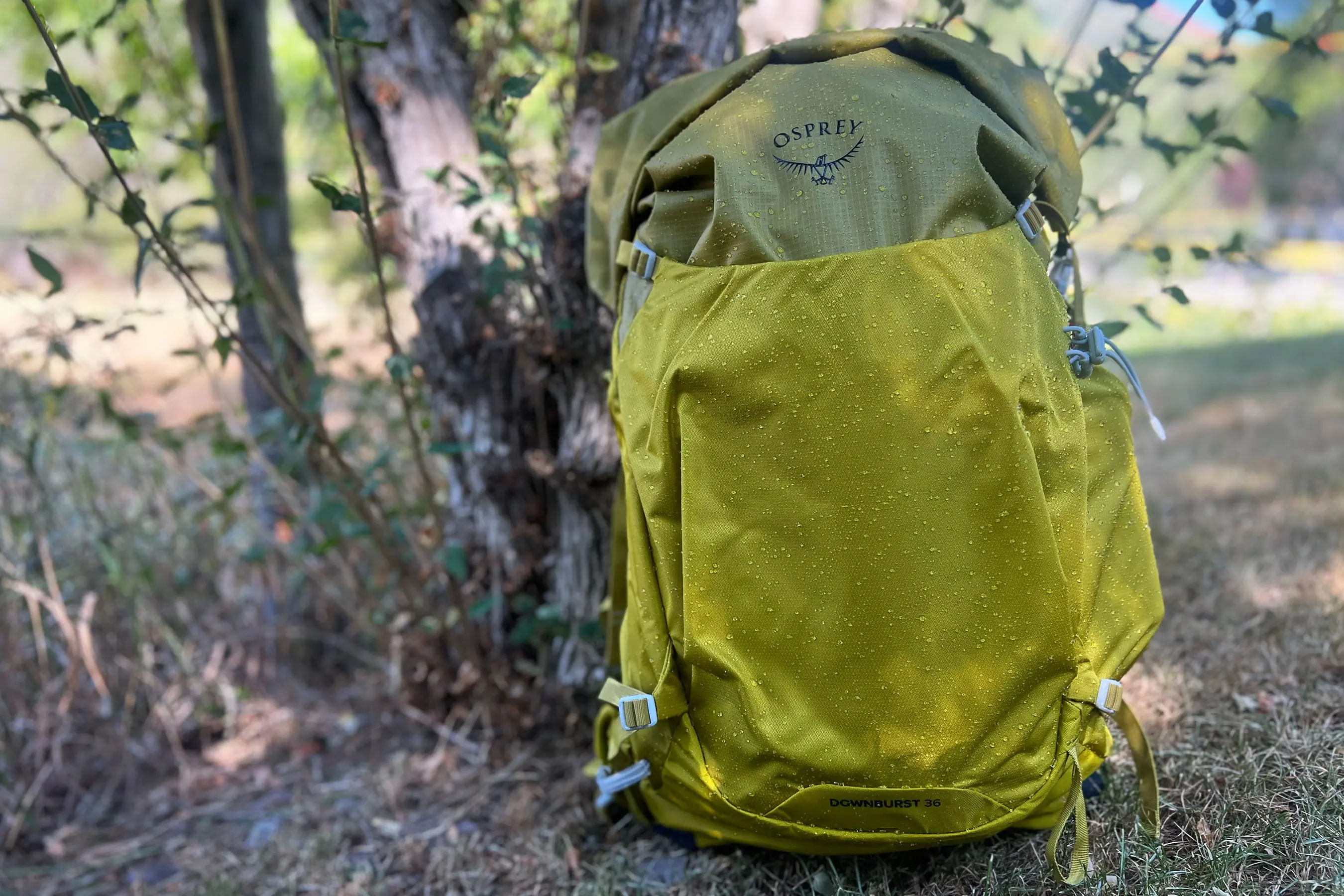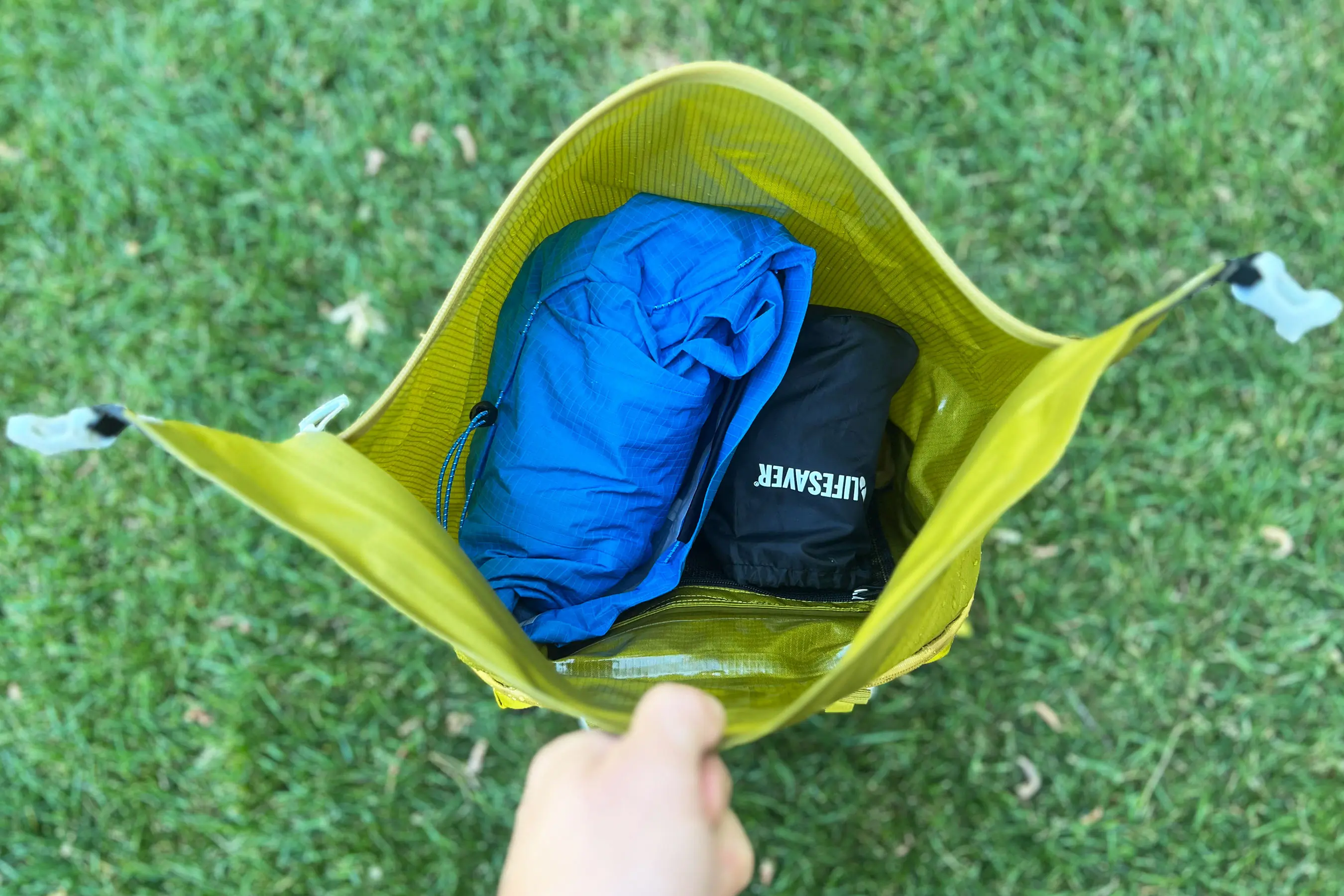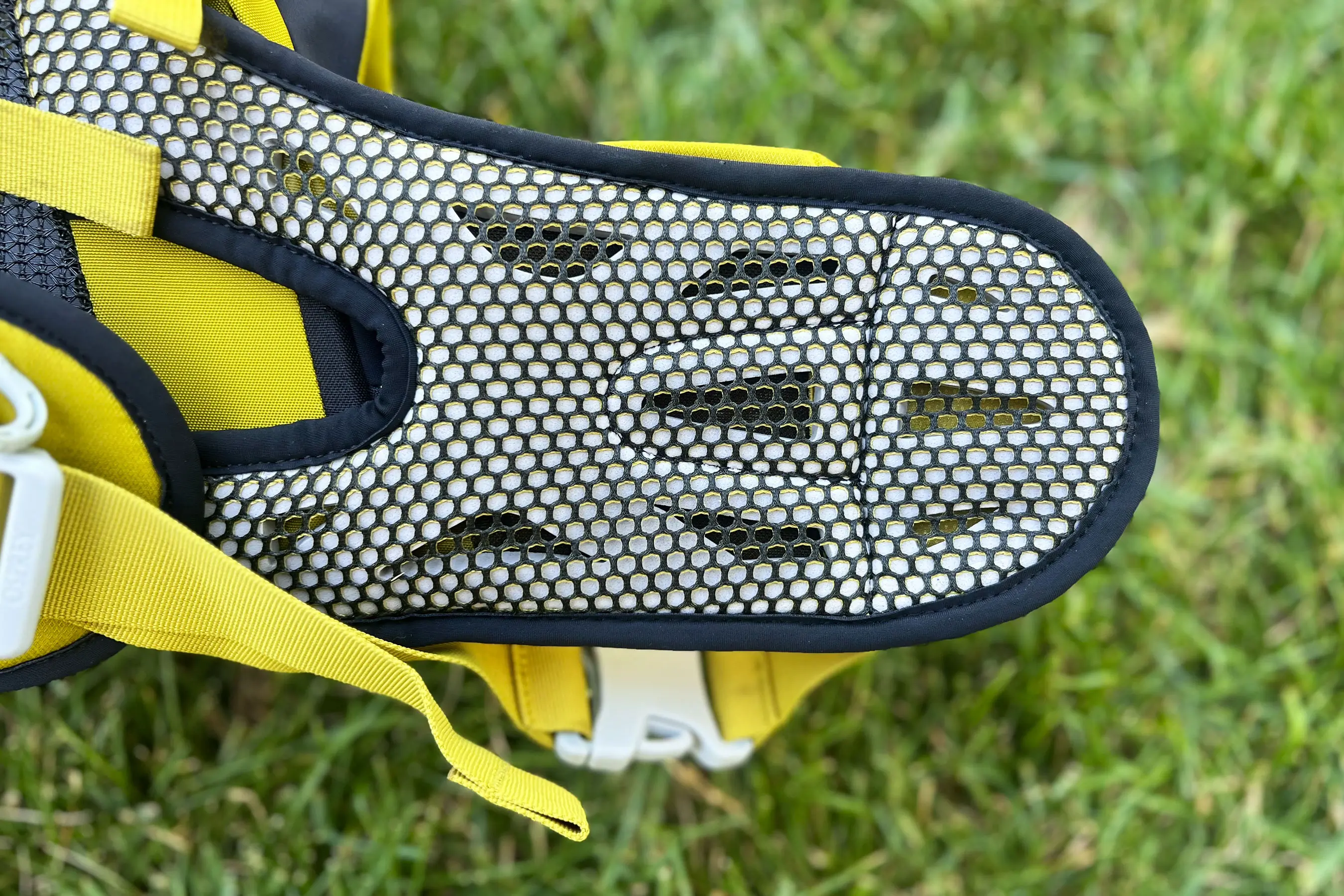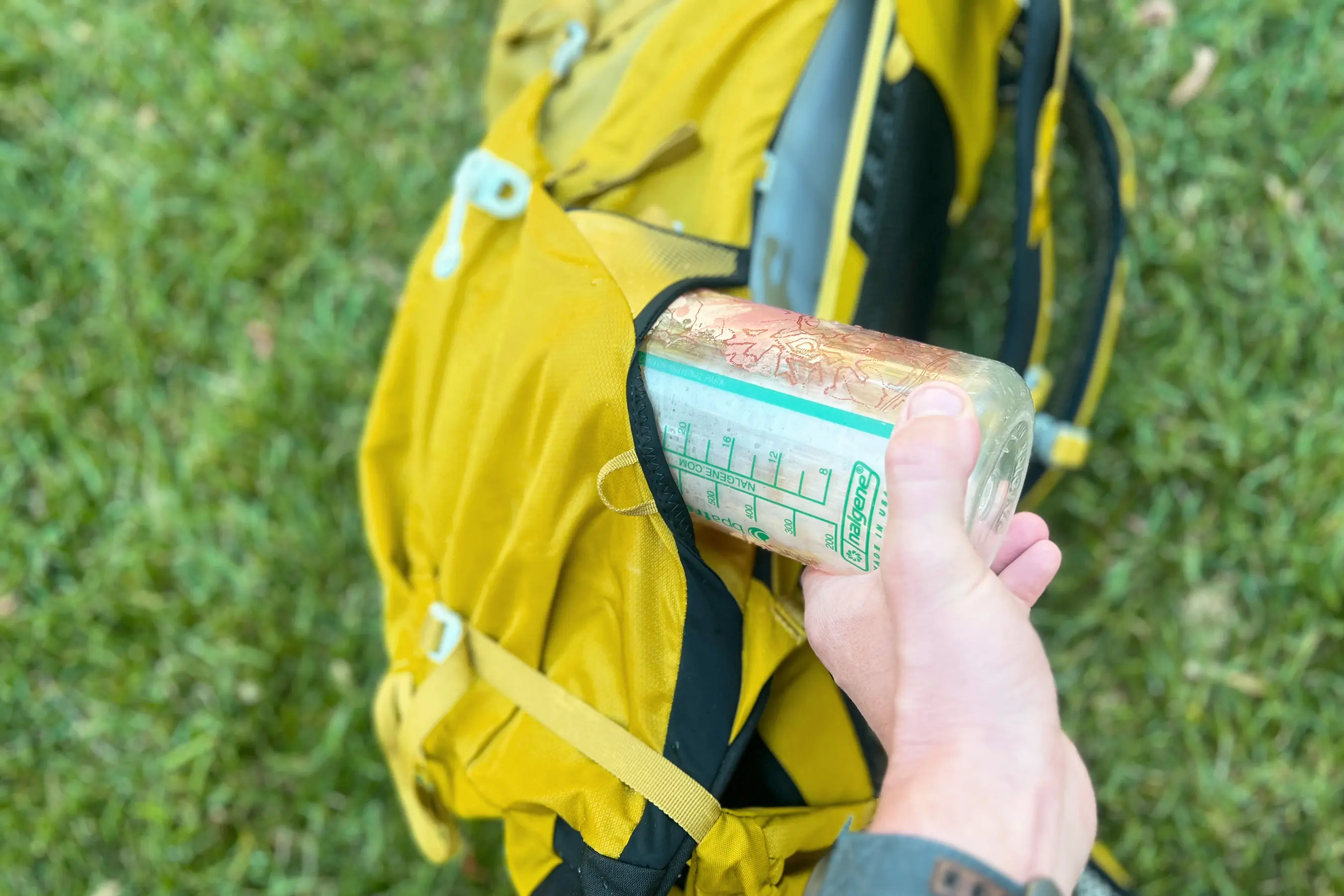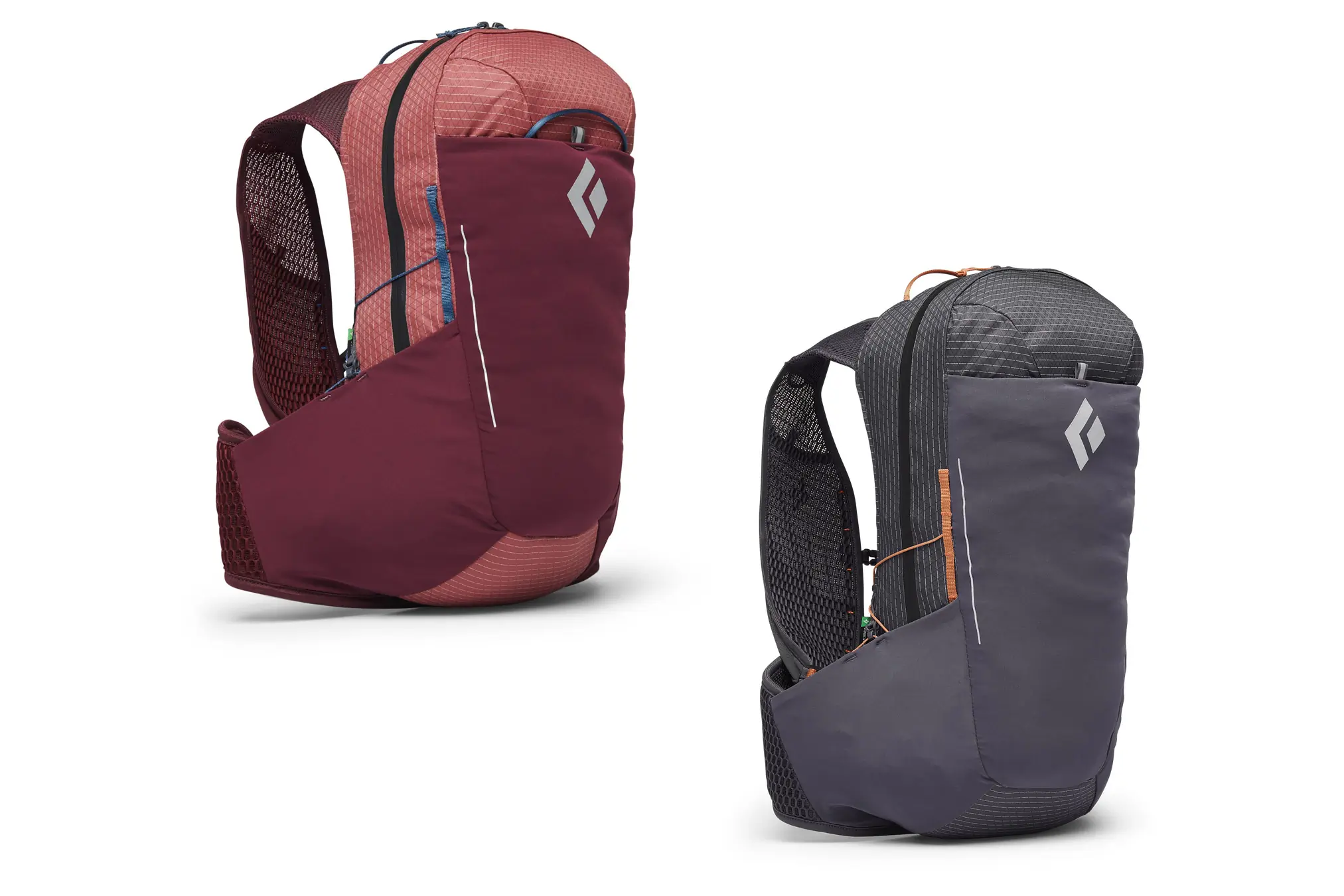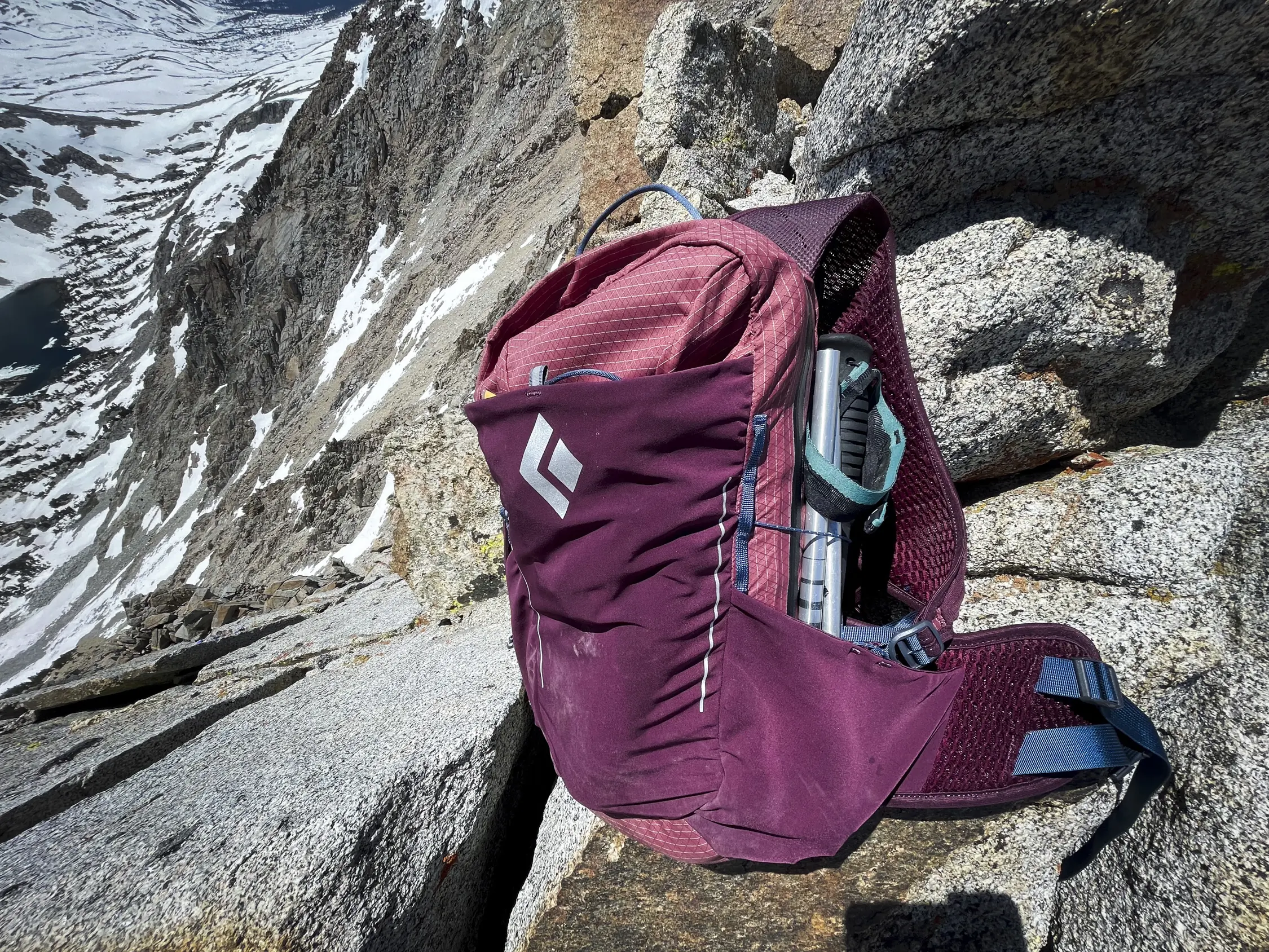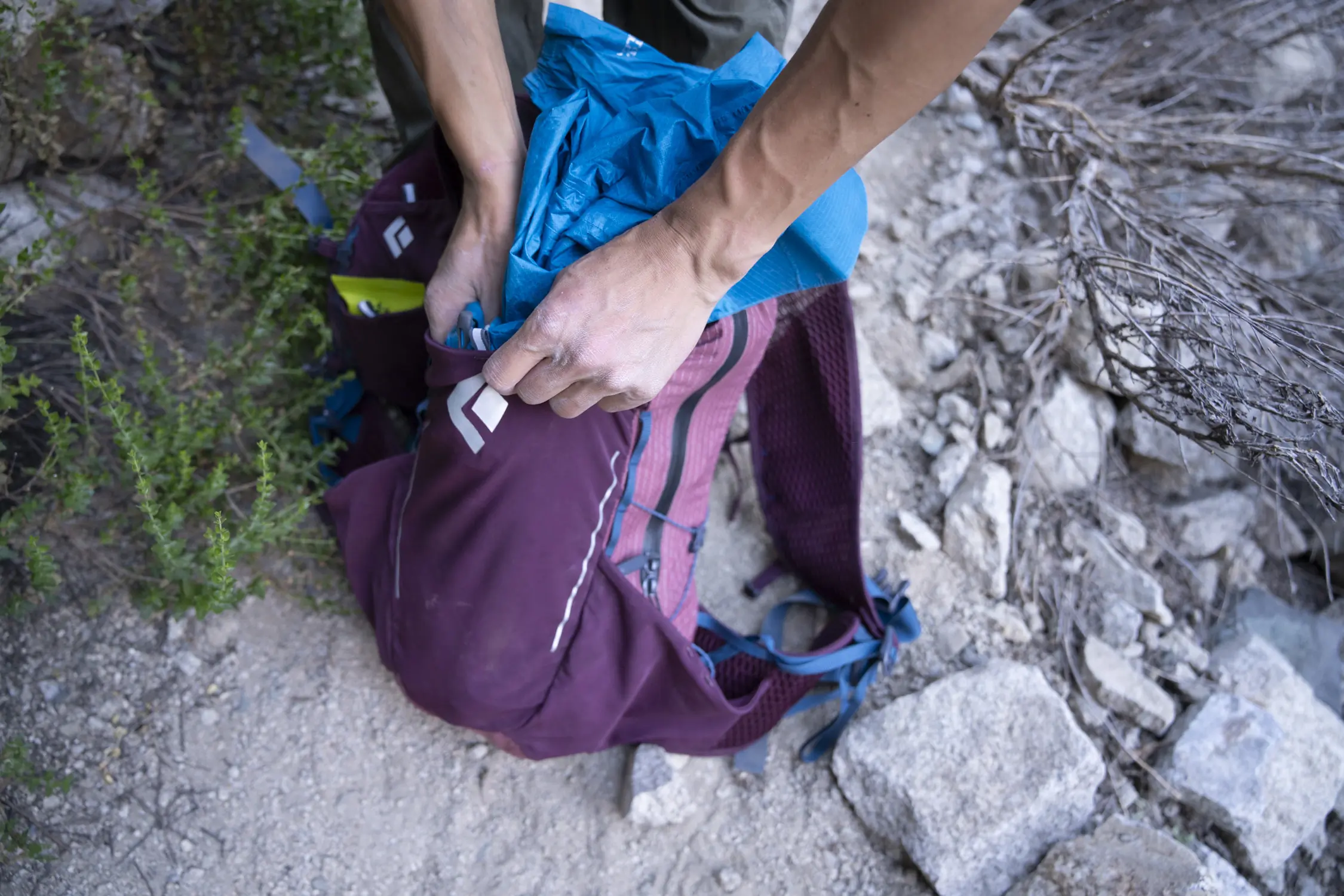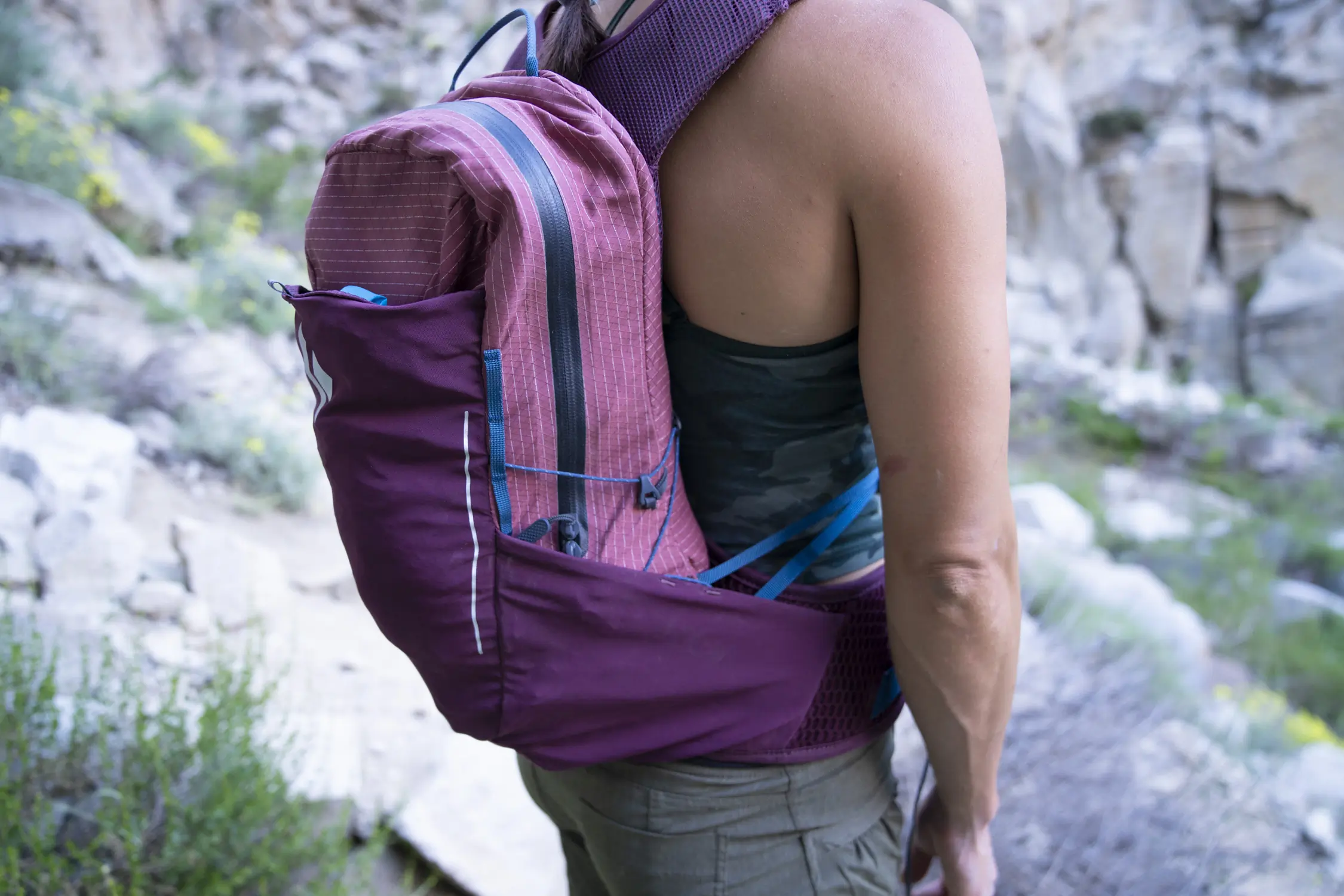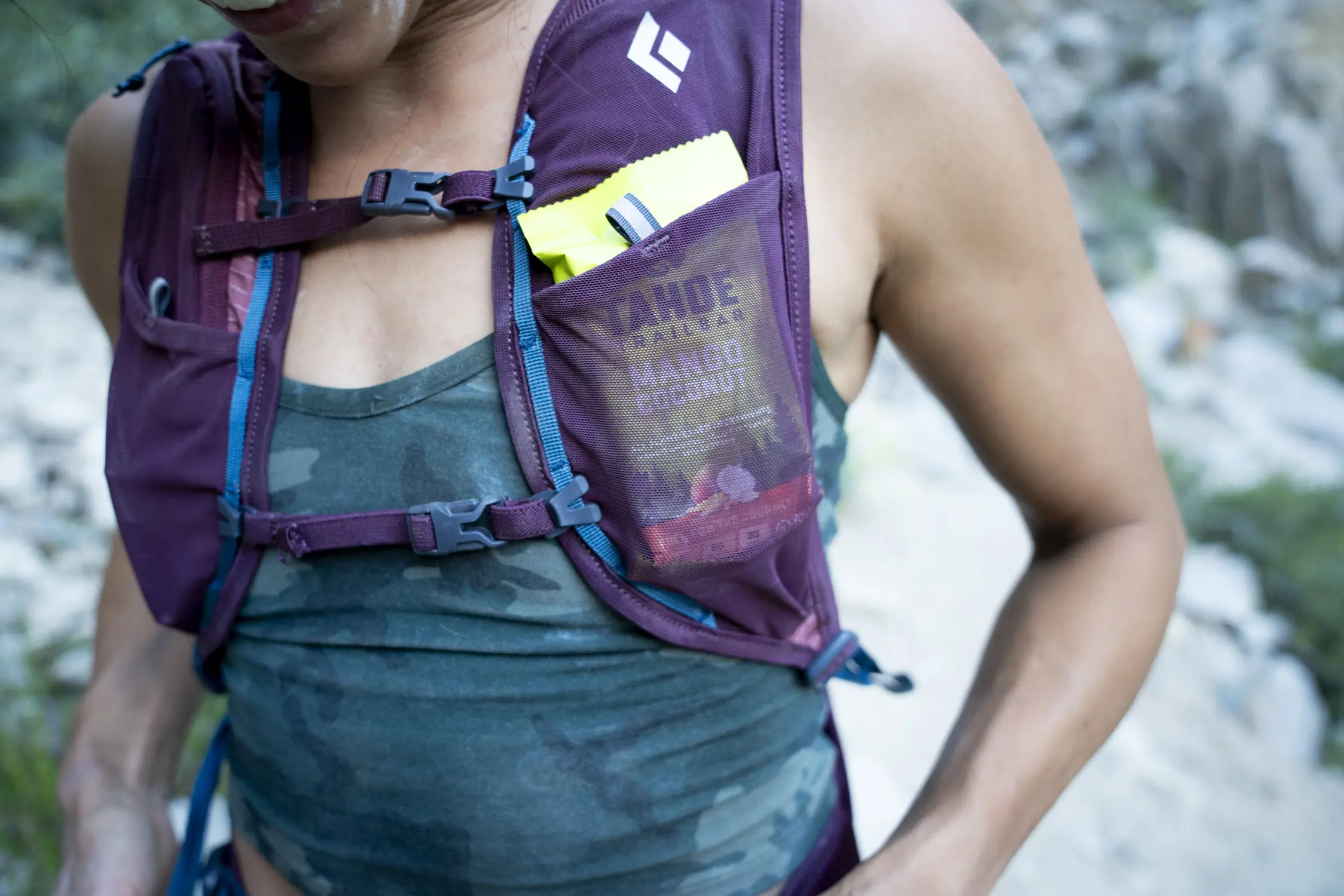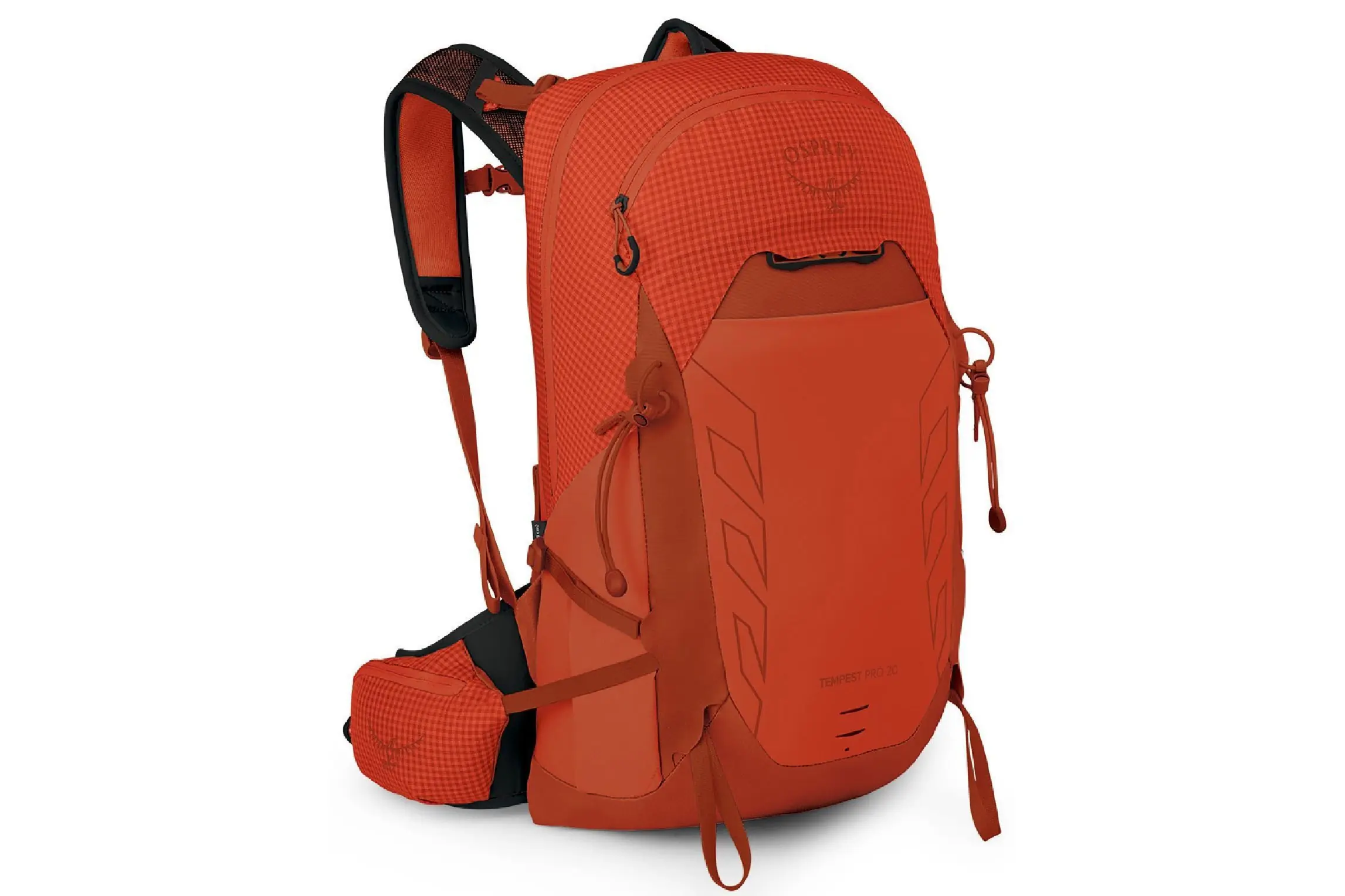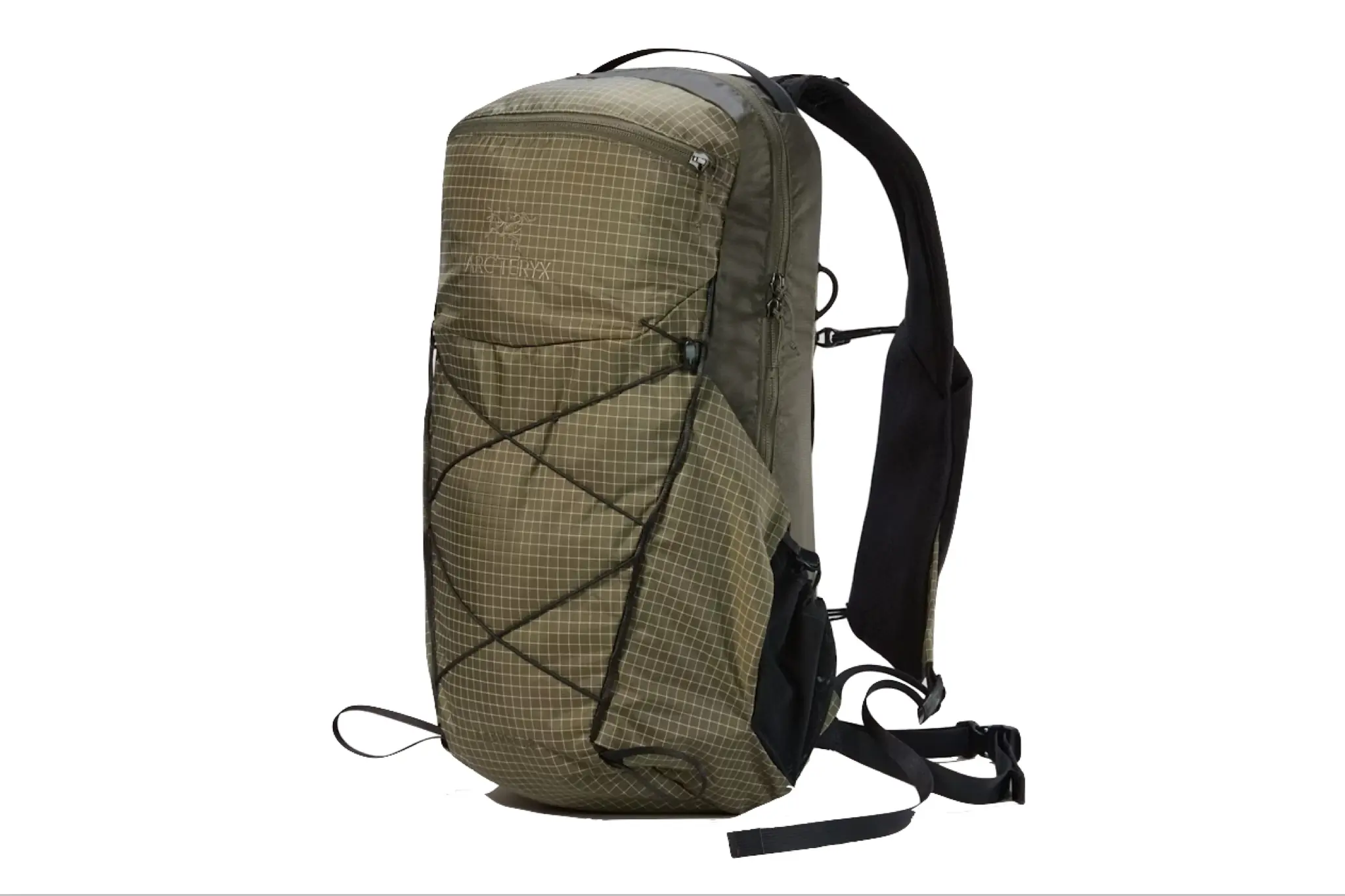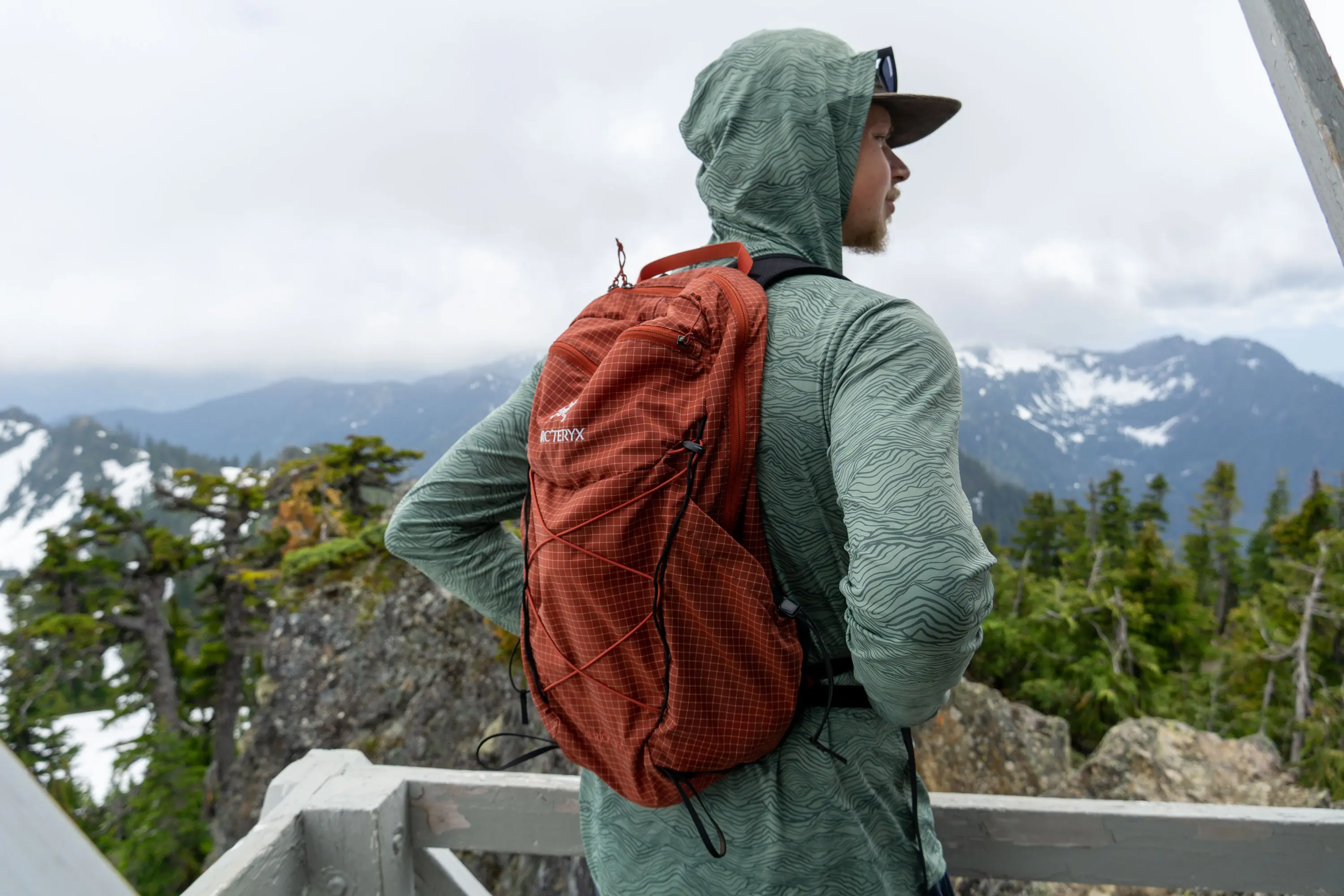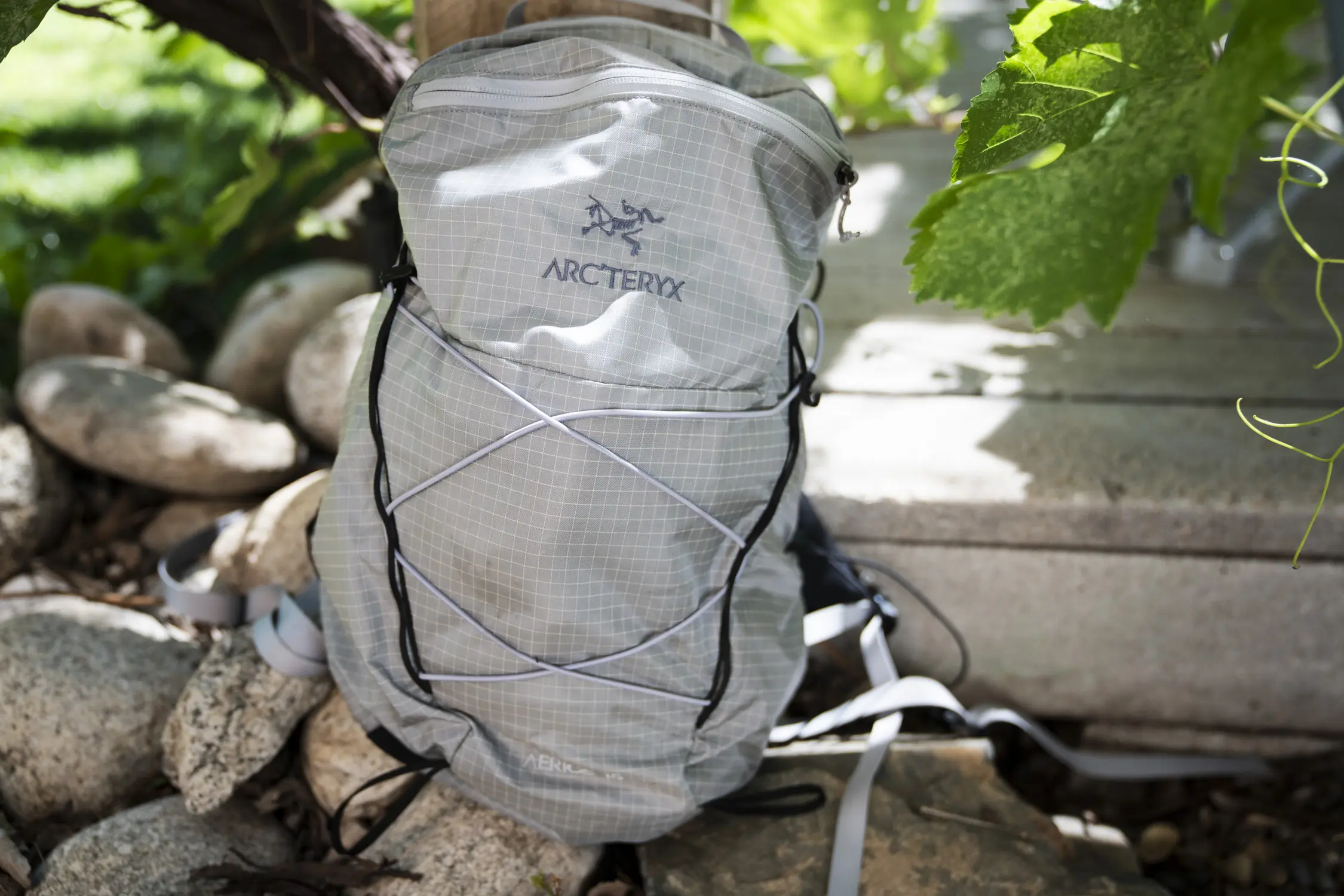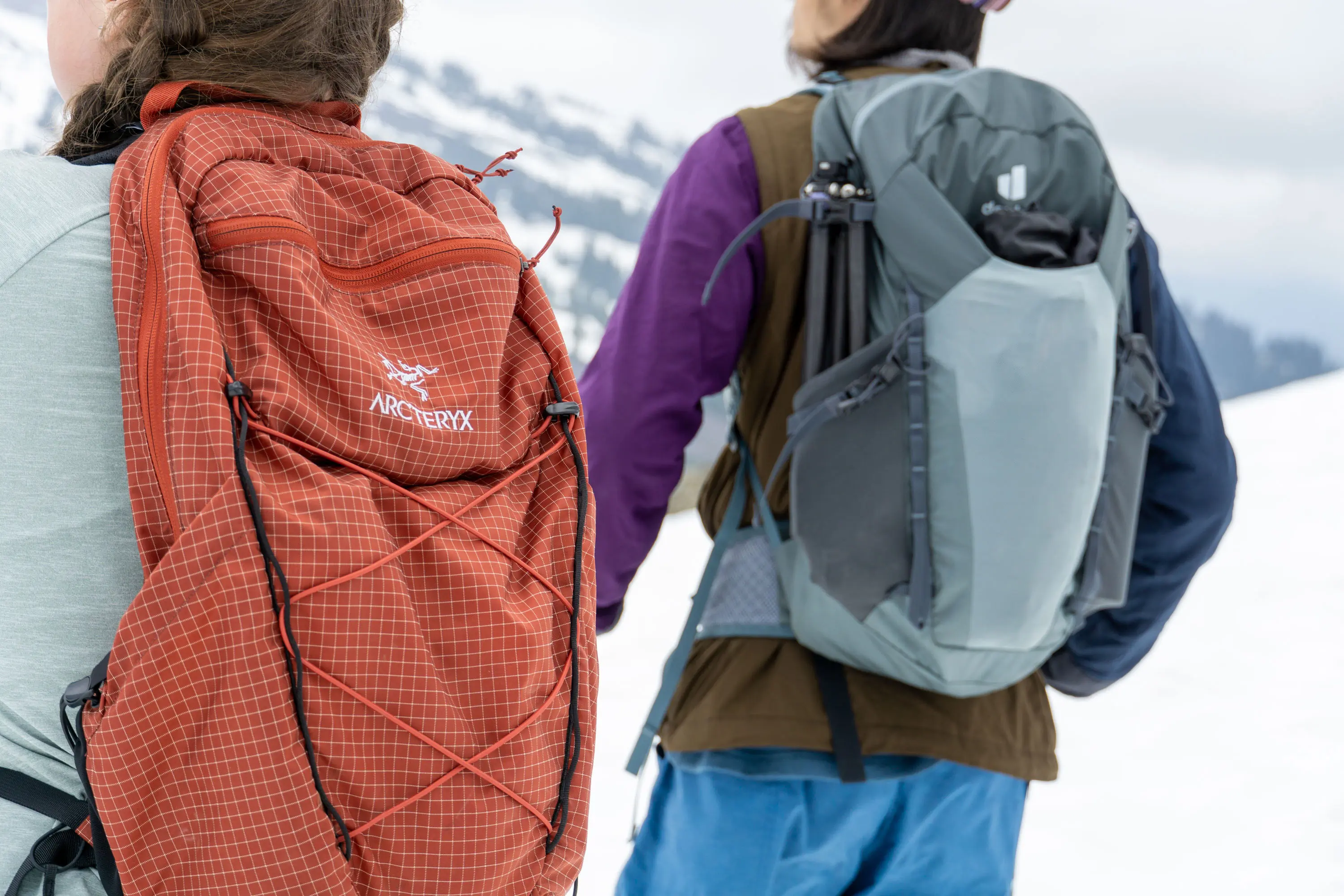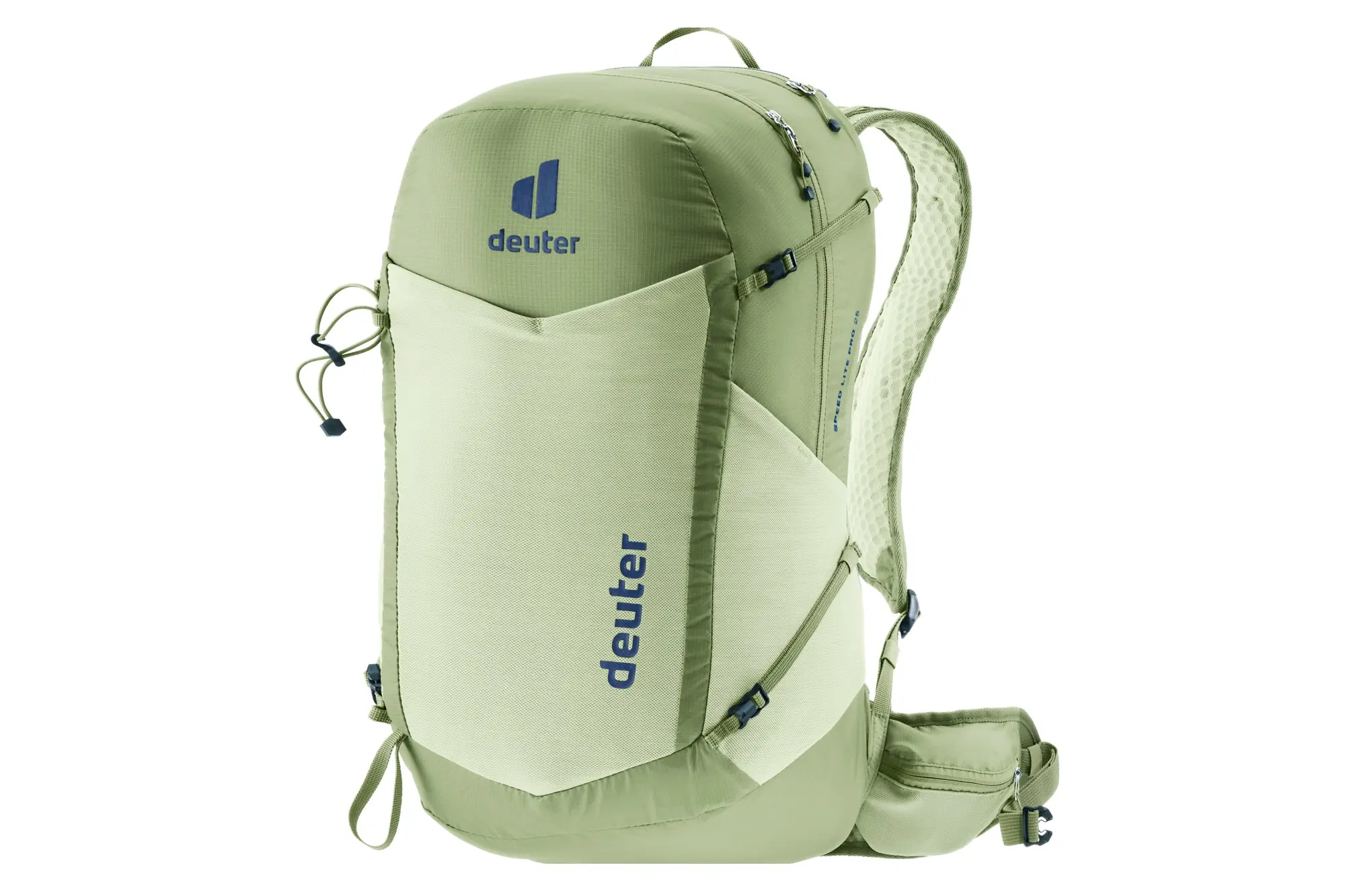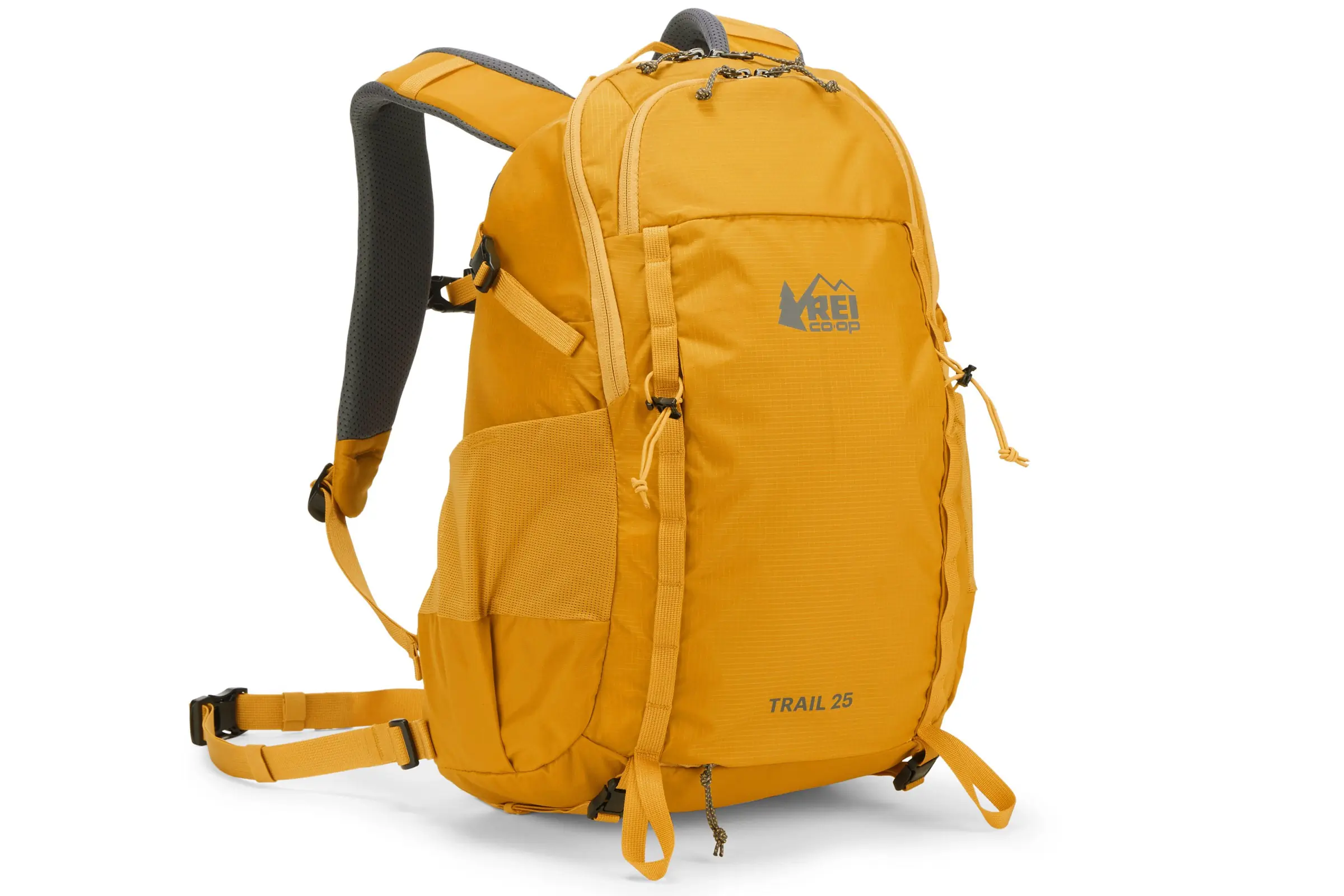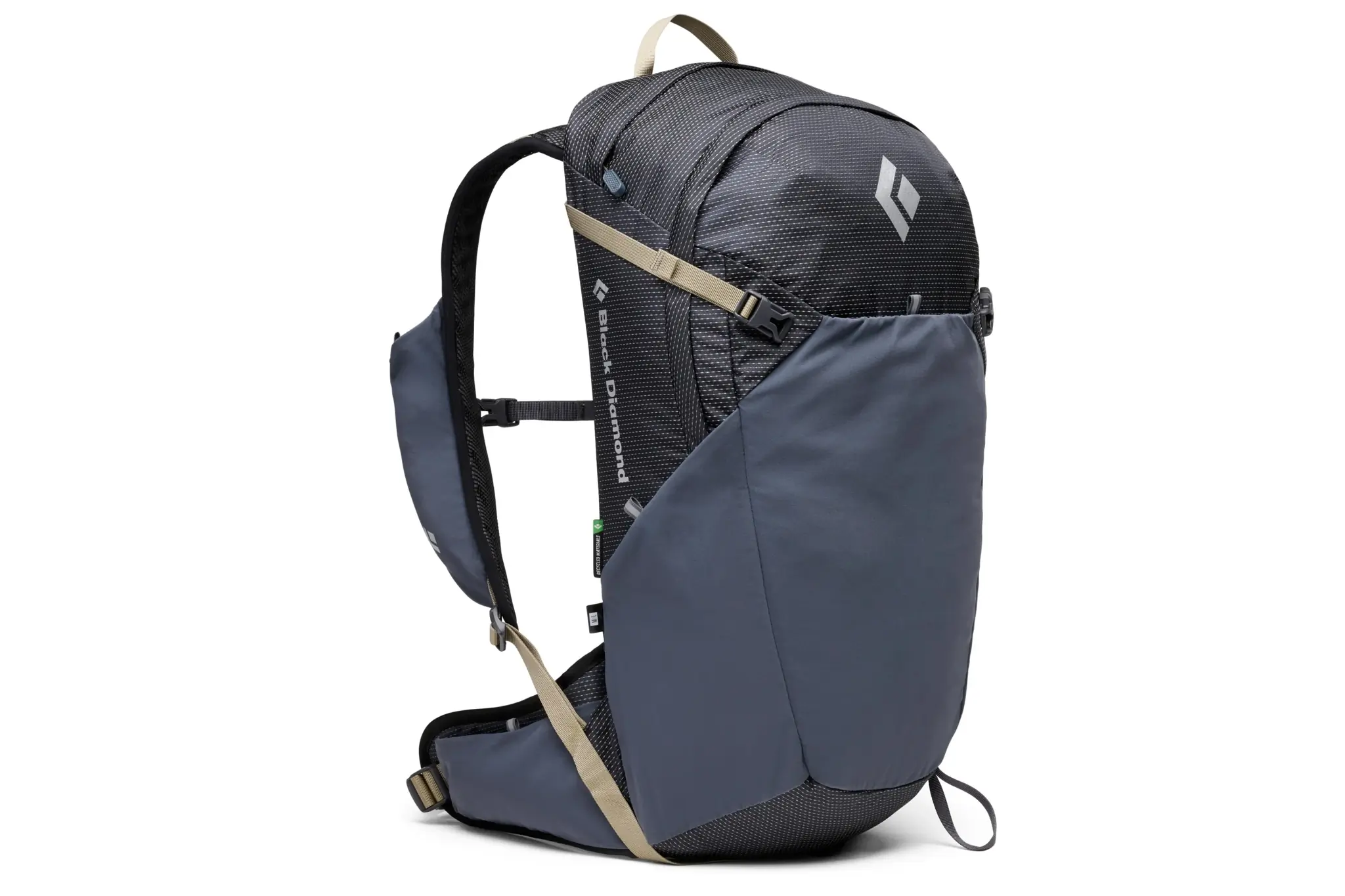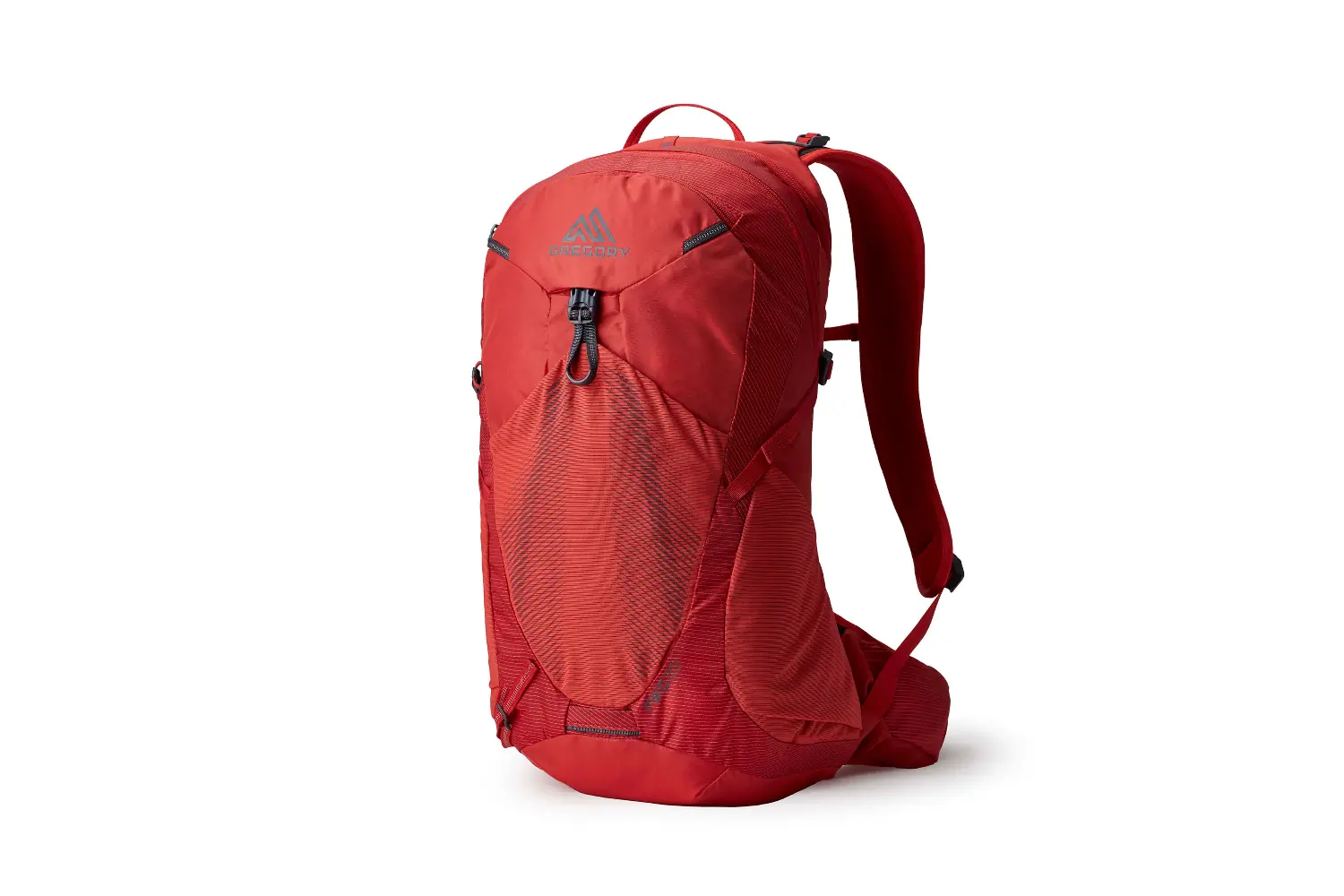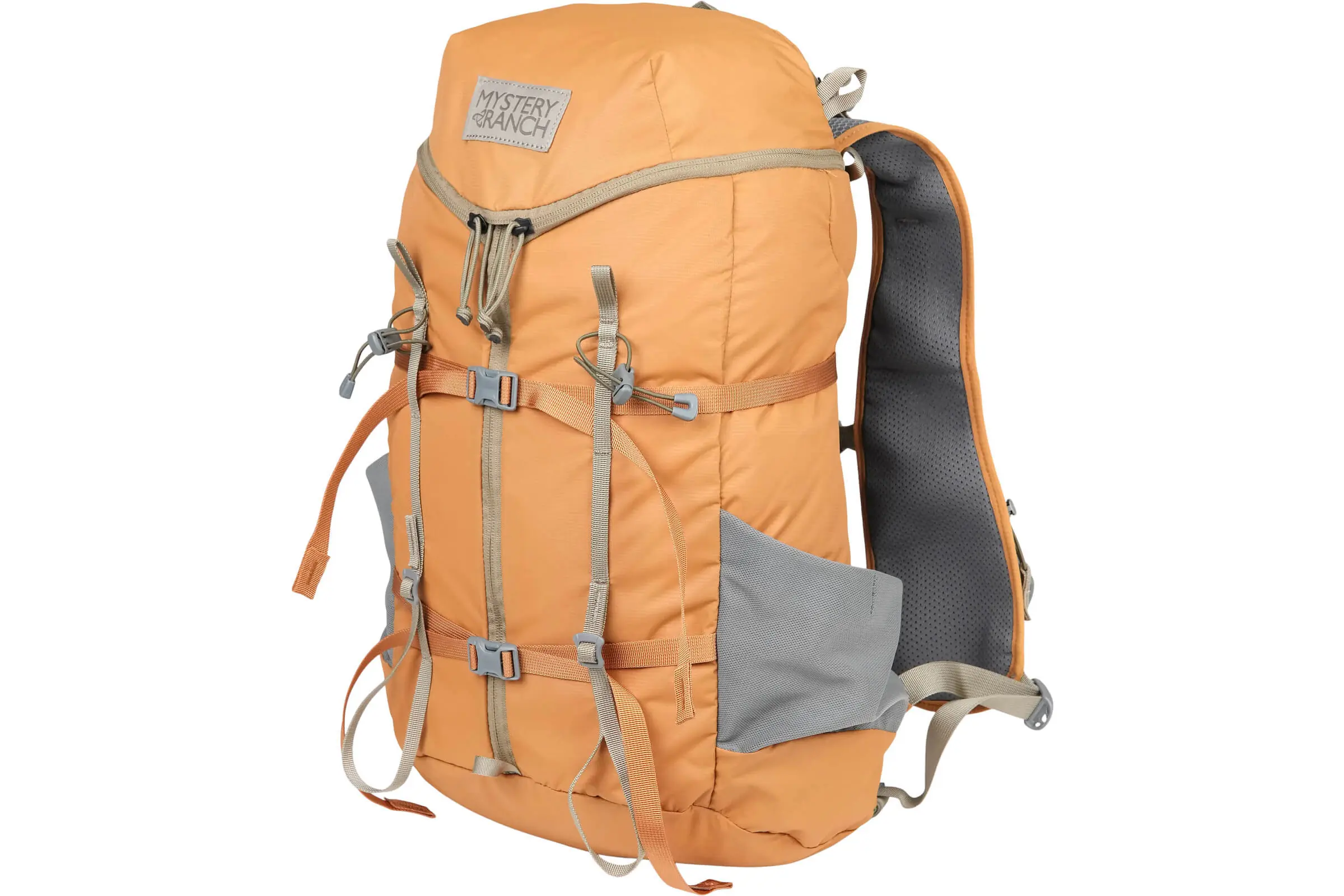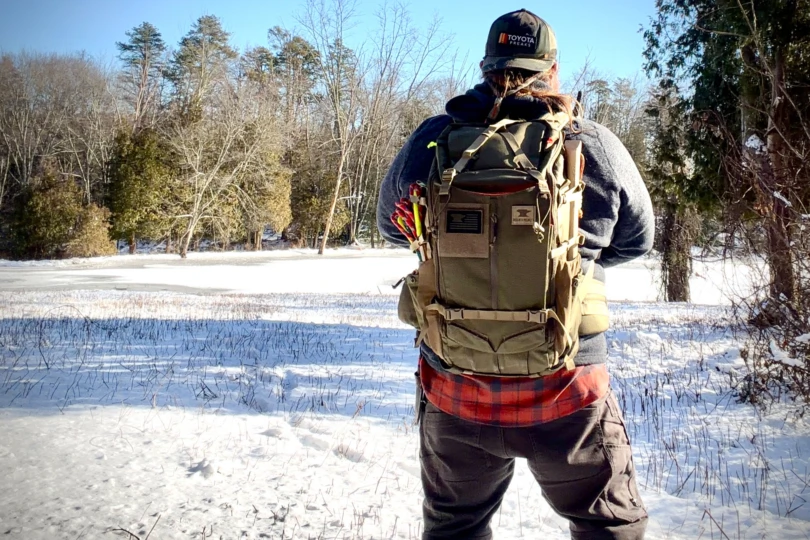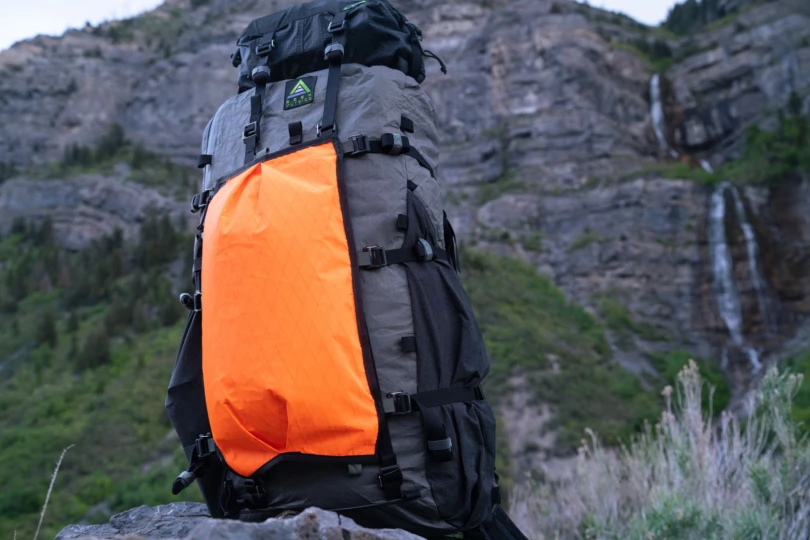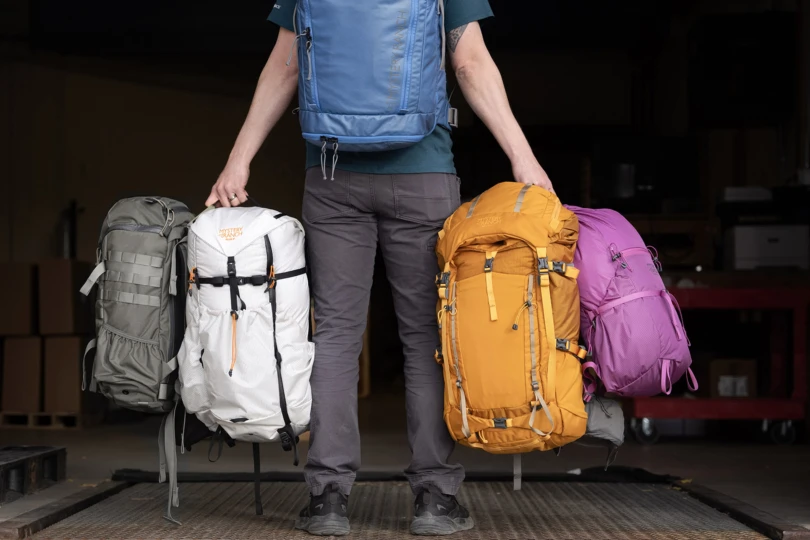Our expert gear testers have been reviewing the best daypacks for more than a decade now, hitting the trail and putting each to the test to hone in on the perfect option for anyone. These packs have been taken from the desert slopes of the Sierra Nevada to the green forested mountains of the Pacific Northwest, and I’ve pulled together the winners from our travels.
Daypacks are simple pieces of gear, but it can be tricky to find the right one based on style, fit, and your needs. That’s why I’ve broken down the best packs into a few different categories to help you choose, and have found that the trick is to find one that hits these four criteria: comfort, fit, included features, and ideal price.
Our testing involved hiking miles with each pack, loading it up with typical gear for a day’s outing, and taking notes on each one. To choose the best of the best, I ranked each pack on quality, feedback from our testing, and price. Whether you need a solid all-around pack like the Osprey Talon 22 or a bag that won’t break the bank, like the REI Co-op Flash 22, we’ve got options to suggest.
Editor’s Note: We updated our Daypacks guide on August 18, 2025, to add additional rating attributes to each of our daypack selections. These metrics, Comfort, Organization & Volume, Durability, and Weight, are all rated based on testing feedback from the team and used to compare packs side-by-side.
The Best Daypacks of 2026
Osprey Talon 22
-
Comfort
8.0
-
Organization & Volume
8.0
-
Durability
8.0
-
Weight
7.0
- Material: 210D/420D recycled ripstop nylon
- Pockets: Three external stretch, one external zippered, and two hipbelt
- Suspension Style: Frameless foam back panel
- Hydration-Compatible: Yes
- Ideal Use: Hiking, biking, or even traveling
- Weight: 2 lbs.
Pros
- Many attachment features
- Cushy suspension system
- Available in extended sizes
- Pocket for nearly everything
Cons
- On the heavier end at 2 pounds
- Fairly pricey compared to similar daypacks
REI Co-op Flash 22
-
Comfort
6.0
-
Organization & Volume
6.0
-
Durability
6.0
-
Weight
8.0
- Material: Recycled ripstop nylon
- Pockets: 1 main compartment, 1 hydration sleeve, 1 small zippered pocket on front, 2 water bottle pockets on each side
- Suspension Style: Frameless foam back panel (removable)
- Hydration-Compatible: Yes, up to 3 L
- Ideal Use: Trail to town
- Weight: 14 oz.
Pros
- Budget price
- Packs down nice and small for transport in a bigger pack
- Wide hipbelt for such a minimal pack
- Deep water bottle pockets can fit a Nalgene
Cons
- Lower capacity
- Not much structure when not full
Patagonia Refugio 26L Pack
-
Comfort
7.0
-
Organization & Volume
8.0
-
Durability
7.0
-
Weight
7.0
- Material: Recycled polyester
- Pockets: 3+ main compartment
- Suspension Style: Frameless
- Hydration-Compatible: Yes
- Ideal Use: Travel, commuting, school
- Weight: 1 lb., 9.9 oz.
Pros
- Larger capacity for added remote-work essentials
- Removable laptop sleeve
- Made of recycled materials
- Ample padded shoulder straps and back panel
Cons
- Could use a small external pocket for personal items
- Thin stretchy mesh water bottle holders prone to abrasion
Osprey Downburst 36
-
Comfort
7.0
-
Organization & Volume
7.0
-
Durability
8.0
-
Weight
6.0
- Material: 210D TPU, 70D, and 420D high-tenacity 100% recycled nylon
- Pockets: Three external stretch, two hip belt
- Suspension style: AirSpeed suspension system
- Hydration-compatible: Yes, up to 3 L
- Ideal use: Wet-weather hiking
- Weight: 3 lbs., 6 oz.
Pros
- IPX5-rated water-resistant main compartment with welded seams
- Comfortable AirSpeed suspension system
- Simple trekking pole holster system
- Separate hydration reservoir sleeve from main compartment
Cons
- Quite pricey
- Not totally waterproof when submerged
- On the heavier side at over 3 pounds
Black Diamond Pursuit 15
-
Comfort
7.0
-
Organization & Volume
7.0
-
Durability
7.0
-
Weight
6.0
- Material: 100% recycled polyester
- Pockets: 1 zippered and 3 stretch pockets on the shoulder straps; 1 large stretch-woven front pocket; 2 quick-access side pockets; 1 interior zippered pocket with key clip
- Suspension Style: Frameless foam back panel
- Hydration-Compatible: Yes
- Ideal Use: Scrambling or summit pack
- Weight: 1 lb., 8 oz.
Pros
- Comfortable suspension system with seamless wing construction that hugs your body
- Lots of pockets
- Easy access trekking pole storage
- Deep front stuff pocket
Cons
- No ice axe loop like the Black Diamond Distance pack
- Pricey for the size
Osprey Tempest Pro 20
-
Comfort
7.0
-
Organization & Volume
8.0
-
Durability
7.0
-
Weight
6.0
- Material: 210D Nanofly UHMWPE nylon + 420HD nylon packcloth
- Pockets: Three external stretch, one external zippered, and two hipbelt
- Suspension Style: Injection-molded AirScape back panel
- Hydration-Compatible: Yes, up to 2 L
- Ideal Use: Hiking, biking,
- Weight: 2 lbs., 1 oz.
Pros
- Feature-rich with a place or pocket for everything
- Highly adjustable Bio-Stretch harness and hip belt
- AirScape backpanel is above and beyond many other daypack frames
Cons
- On the pricier side at $200
- Hydration pouch won't accept full 3 L bladders in smaller pack sizes
Arc’teryx Aerios 18
-
Comfort
8.0
-
Organization & Volume
7.0
-
Durability
8.0
-
Weight
8.0
- Material: 100-denier Cordura nylon; 210-denier Cordura nylon with twisted 200-denier LCP grid
- Pockets: Main compartment, small front pocket, two side zippered pockets, internal security pocket with key clip, shoulder harness pockets
- Suspension Style: Highly breathable AeroForm back panel with anti-barreling frame sheet
- Hydration-Compatible: No
- Ideal Use: Trail running and day hikes
- Weight: 1 lb., 4 oz.
Pros
- Comfortable shoulder harness with zippered pockets and pouches
- Double set of stretchy chest cords to keep pack from moving too much
- High-quality Cordura materials with integrated LCP grid
- Back panel is one of the more well-designed we've seen
Cons
- Pricey for a daypack
- No hydration sleeve
- Side pockets are not the most secure
Other Daypacks to Ruck Your Kit In
There are hundreds of daypacks on the market, and while we think the seven awarded above are just a bit better than the rest, we’ve also used many others we’d trust to carry our day hiking kits in. Check out the daypacks below before making your choice.
-
Comfort
6.0
-
Organization & Volume
7.0
-
Durability
6.0
-
Weight
8.0
- Material: 120D polyamide
- Pockets: Two hip belt, two chest harness, three stretch, and two zippered
- Suspension Style: Frameless foam back panel
- Hydration-Compatible: Yes
- Ideal Use: Fast and light day hikes (or runs) in the mountains
- Weight: 1 lb., 8 oz.
Pros
- Flexible frame balances support with mobility very well
- Running vest style straps are comfortable, and full of storage
- Accessory mounts for almost anything
Cons
- Lightweight fabric doesn't handle abrasion or heavy precip well
- Hip belt isn't removable
-
Comfort
7.0
-
Organization & Volume
6.0
-
Durability
7.0
-
Weight
7.0
- Material: Recycled ripstop nylon
- Pockets: 2 mesh side pockets, 1 main compartment, 2 zippered pockets, 1 pocket for hydration bladder
- Suspension Style: Internal HPDE framesheet
- Hydration-Compatible: Yes
- Ideal Use: Day hikes, around town
- Weight: 1 lb., 15 oz.
Pros
- Comfortable framesheet suspension
- A good amount of pack for the price
- Lots of useful features
- Good quality materials
Cons
- No padded waist belt
- Pockets can make the front flap of the pack top heavy
-
Comfort
7.0
-
Organization & Volume
7.0
-
Durability
7.0
-
Weight
6.0
- Material: Robic nylon body, polyester liner
- Pockets: Three external stretch, two zippered, two hip belt
- Suspension Style: Alloy wire frame, breathable mesh back panel
- Hydration-Compatible: Yes, up to 3 L
- Ideal Use: Off trail adventures, scrambling, long day hikes
- Weight: 1 lb., 14 oz.
Pros
- Frame flexes with you as you move, and works great on off-trail routes
- Rugged Robic nylon exterior
- Adjustable frame heights
- Integrated rain cover
Cons
- Hip belt feels a little overbuilt
- Stretch pocket material will rip over time
-
Comfort
7.0
-
Organization & Volume
8.0
-
Durability
7.0
-
Weight
6.0
- Material: 100-denier high-density nylon, 210-denier high-density nylon
- Pockets: 6+ main compartment
- Suspension Style: Frameless
- Hydration-Compatible: Yes
- Ideal Use: Dayhikes
- Weight: 2 lbs.
Pros
- Well-made suspension and comfortable hipbelt
- Many pockets
- Made of high-quality recycled materials
- Adjustable torso length
Cons
- Can feel a tad overbuilt for its size
- Not waterproof
-
Comfort
7.0
-
Organization & Volume
7.0
-
Durability
7.0
-
Weight
6.0
- Material: 210 Robic nylon
- Pockets: 3+ main compartment
- Suspension Style: Frameless
- Hydration-Compatible: Yes
- Ideal Use: Dayhikes, travel, commuting
- Weight: 1 lb., 4.8 oz.
Pros
- Comfortable running vest-style harness
- Easy access to gear
- Frontal daisy chain and compression straps for external storage
- Hydration reservoir compatible
Cons
- Vest-style harness won’t be for everyone
- Mesh pockets only available on 25L version
- Narrow reservoir pocket
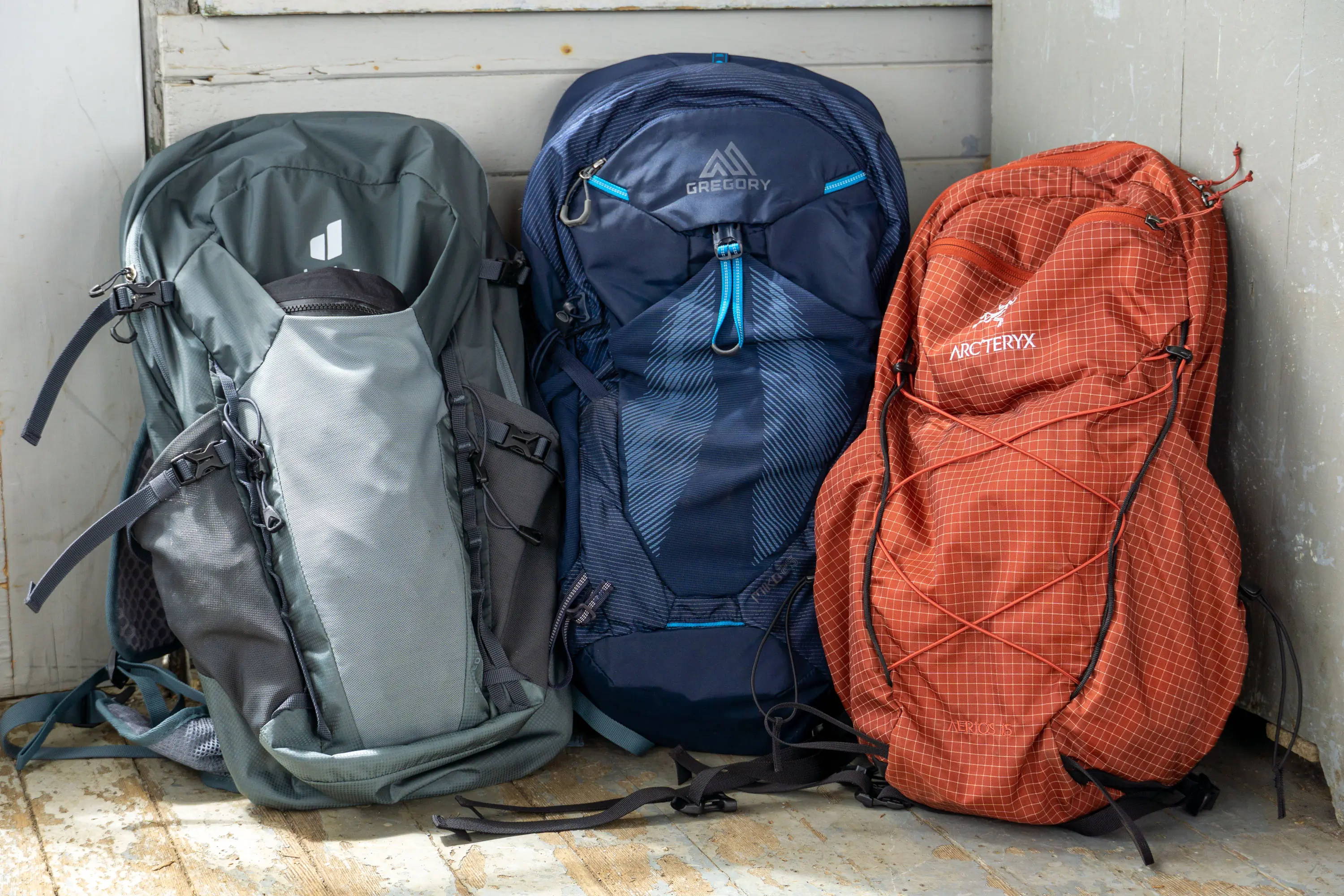
Daypack Comparison Chart
| Daypack | Price | Material | Pockets | Suspension Style | Weight |
|---|---|---|---|---|---|
| Osprey Talon 22 | $160 | 210D/420D recycled ripstop nylon | 7 total | Frameless foam back panel | 2 lbs. |
| REI Co-op Flash 22 | $60 | Recycled ripstop nylon | 5 total | Frameless foam back panel (removable) | 14 oz. |
| Patagonia Refugio 26L | $109 | Recycled polyester | 4 total | Frameless | 1 lb., 9.9 oz. |
| Osprey Downburst 36 | $320 | 210D TPU, 70D, and 420D high-tenacity 100% recycled nylon | 5 total | AirSpeed suspension system | 3 lbs., 6 oz. |
| Black Diamond Pursuit 15 | $150 | 100% recycled polyester | 8 total | Frameless foam back panel | 1 lb., 8 oz. |
| Osprey Tempest Pro 20 | $200 | 100D Nanofly UHMWPE nylon + 420HD nylon packcloth | 6 total | Injection-molded AirScape back panel | 1 lb., 14.4 oz. |
| Arc’teryx Aerios 18 | $180 | 100D CORDURA nylon with twisted 200D LCP grid | 4 total | AeroFoam back panel | 1 lb., 4 oz. |
| Deuter Speed Lite Pro 25 | $130 | 120D polyamide | 9 total | Frameless foam back panel | 1 lb., 8 oz. |
| REI Co-op Trail 25 | $100 | Recycled ripstop nylon | 6 total | Internal HPDE framesheet | 1 lb., 15 oz. |
| Black Diamond Trail Vista 20 | $160 | Robic nylon body, polyester liner | 7 total | Alloy wire frame, breathable mesh back panel | 1 lb., 14 oz. |
| Gregory Miko & Maya 20 Pack | $130 | 100-denier high-density nylon, 210-denier high-density nylon | 7 total | Frameless | 2 lbs. |
| Mystery Ranch Gallagator 25 | $90 | 210 Robic nylon | 4 total | Frameless | 1 lb., 4.8 oz. |
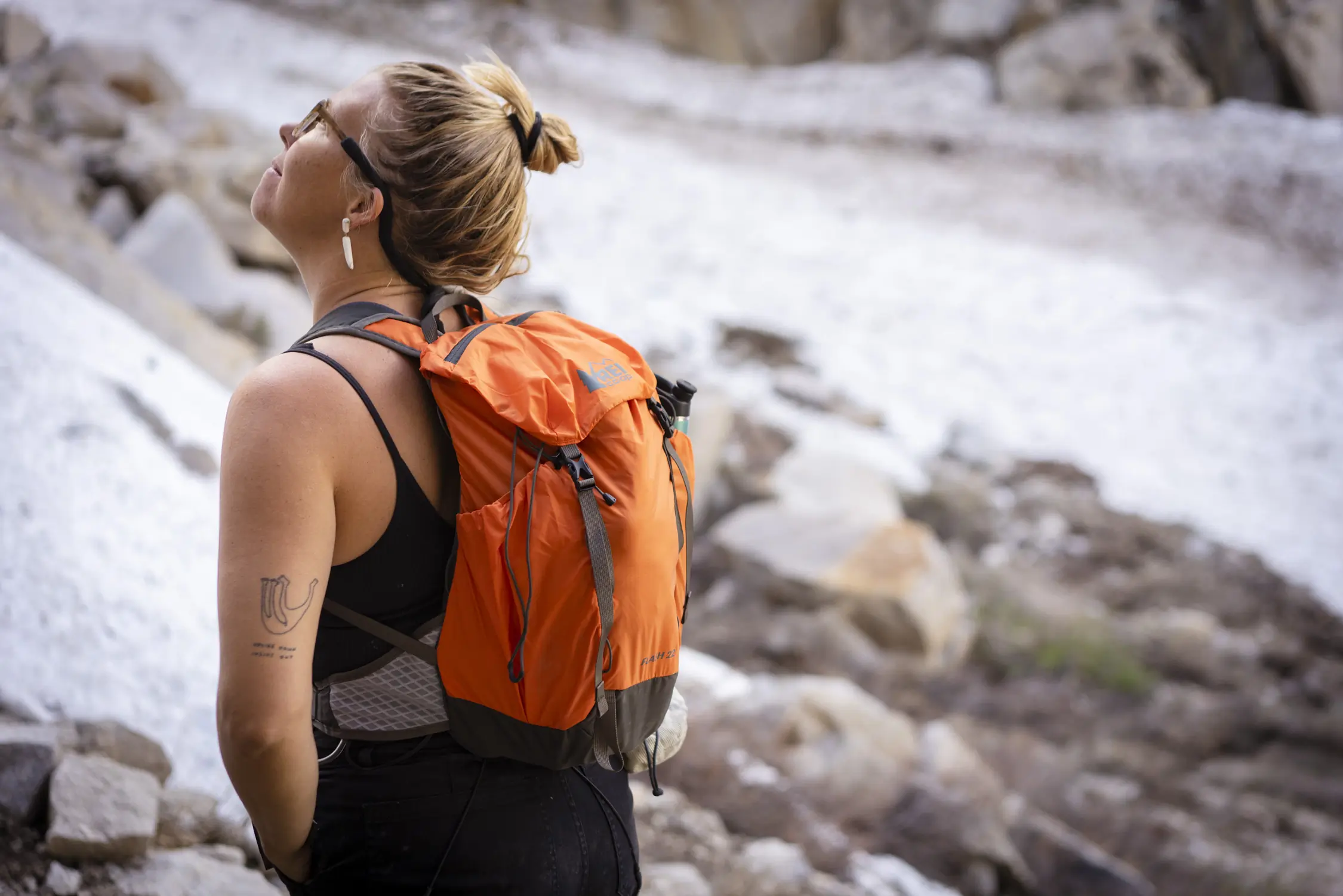



How We Tested the Best Daypacks
Our GearJunkie testers are a multisport bunch who take every opportunity to sneak out for the types of brief adventures that daypacks shine in. And, we’ve put our heads together here to drum up the best daypacks on the market in 2026.
Our gearheads have been testing daypacks for over a decade now, combing the field each year to find new great packs to add to our list. The 15 in this review reflect a variety of the best packs you can find today, covering different uses from casual hiking, technical peakbagging, commuting to work, or traveling abroad. The beauty of a daypack is in its absolute versatility, and we’ve used ours to tackle nearly everything.
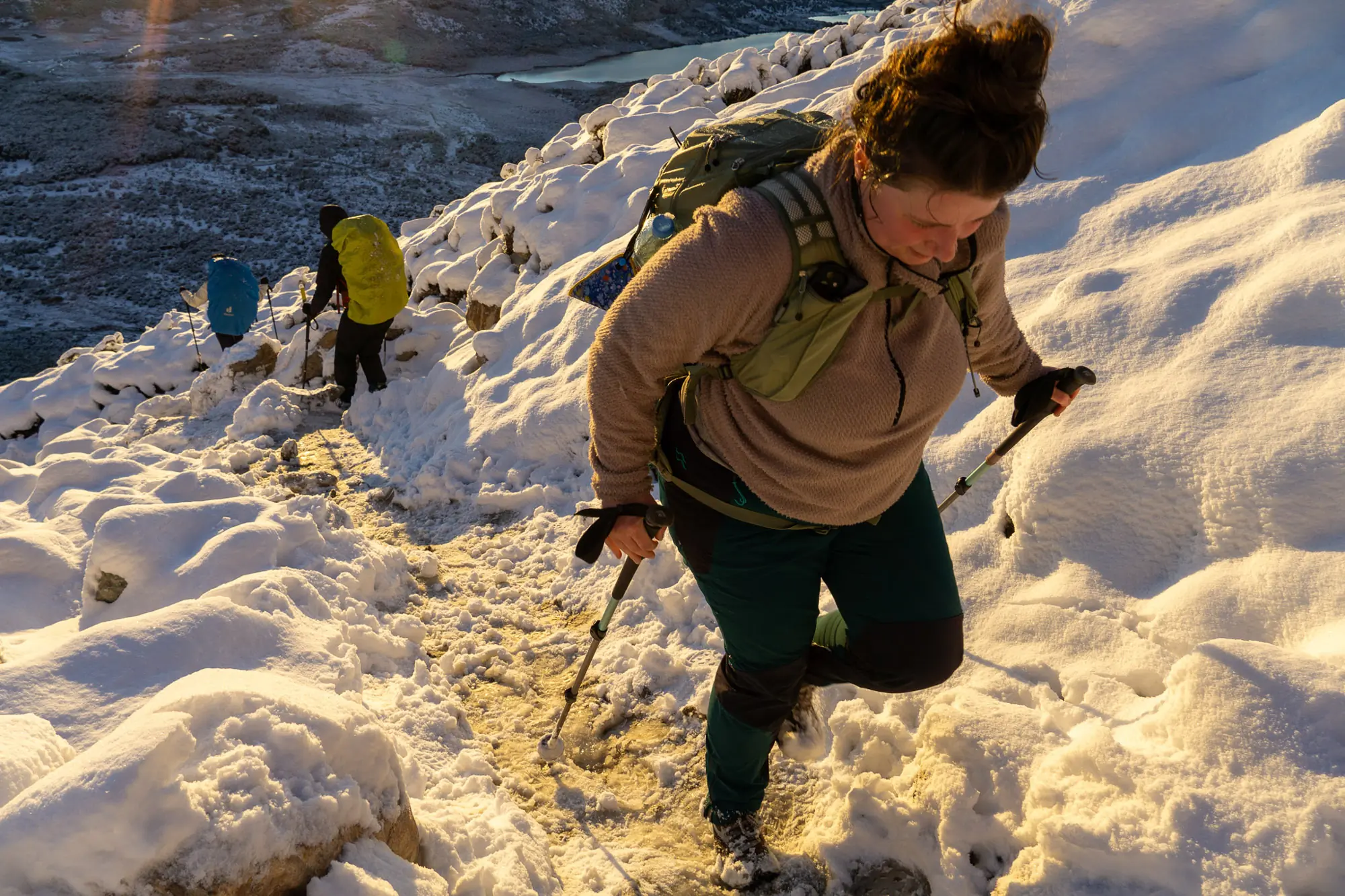



Our Testing Process and Testing Grounds
For this list, our team looked at daypacks across the spectrum — from packable and travel-friendly rucksacks to full-featured hiking and riding packs. Then, we hit the trails, loading them up with the essentials, noting their frame style, comfort and adjustability, features, breathability, and waterproofing. Our testing regimen requires a minimum of 10 miles hiked in each daypack — the length of a solid day trip — before we render any type of opinion.
Beyond this, our review reflects weeks of careful study to bring you an honest look at the pros and cons of each daypack. We loaded, then overloaded packs to see how they carried in real life. We strapped odd-shaped kit to the exterior to see how they held tight — or not. Running-inspired packs were run in, and commuters loaded down with laptops and taken to work. In all, we aimed to test these packs in exactly they way you’ll use them.
We also do a lot of bench testing on these daypacks to ground-truth manufacturer claims and ensure a level playing field when comparing. Daypacks often look and work fairly similarly, so our choice of one over another can boil down to an ounce or two or a specific type of buckle versus another.
Weighing these daypacks is natural, and followed closely by volume testing, where we employ filled stuff sacks of known volume to hone in on just how much these packs will tote. Finally, a quick and dirty moisture resistance test with a spray bottle gives us a look under the hood when it comes to shrugging off an errant rainstorm.
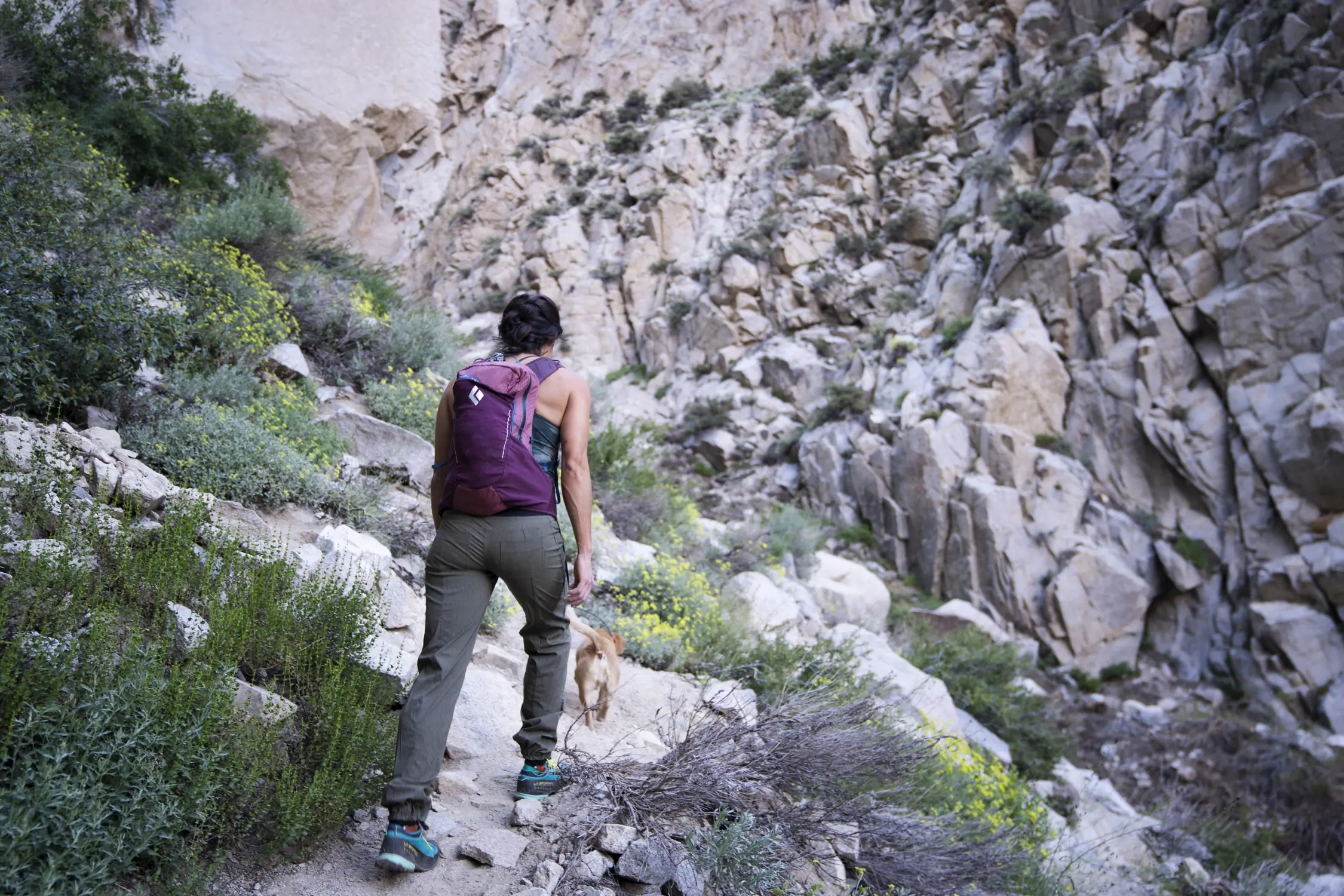



Our Expert Testers
I, guide manager Nick Belcaster, am a Washington-based trail hound who knows well the “get-it-while-you-can” aspect of adventuring in what is sometimes known as the Pacific Northwest. My exploits range from car-to-car alpine adventures in North Cascades National Park to ripping around on mountain bikes just outside of town, and in doing so, I’ve cultivated a taste for what makes a daypack the one.
Our other chief daypack tester, Miya Tsudome, lives in the high desert of Bishop, Calif., at the base of the Sierra Nevada mountain range. She has thousands of hours of gear testing under her belt and spends the majority of her time in the summer climbing, backpacking, and going on day hikes. When it comes to packing a kit for a day, she knows what to look for in a daypack for navigating mountain terrain.
And as always, assisting in our efforts is a backbench of highly motivated GearJunkie outdoors folk of every stripe, from high alpinists to park kickback types. Every daypack we test gets a cycle through the rotation and sees a number of folks before it receives the nod — ensuring that we’ve got input from all types.
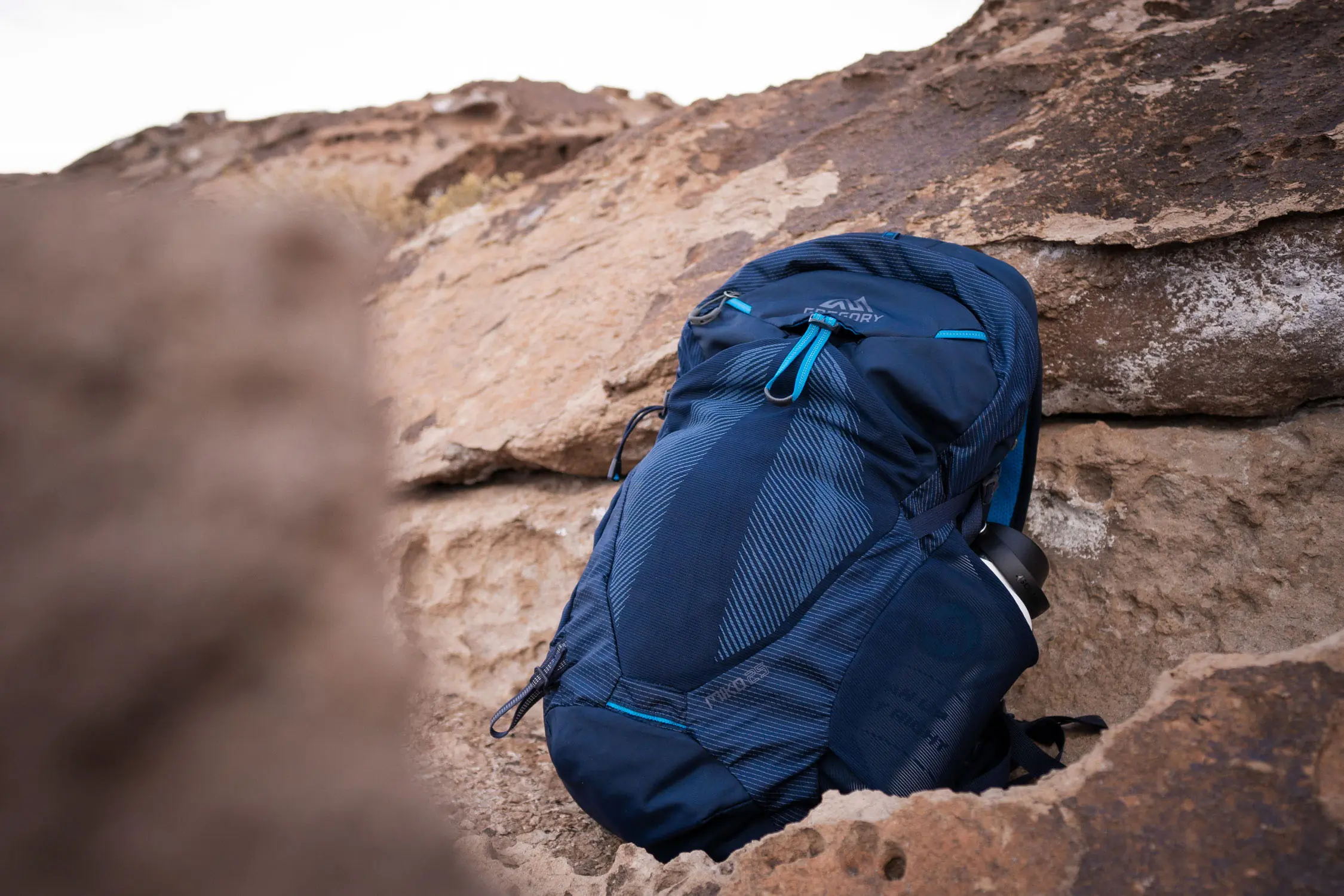



Our Daypack Rating System
I’ve pulled together four different testing metrics that each daypack is rated on. This allows us to go a bit deeper than general impressions and compare packs side by side to see where they excel and where they fall a bit flat.
Comfort
Comfort is a big deal in daypacks, and I prioritize easy carry over pretty much everything else when rating these packs. Our team looks for well-padded shoulder straps and hip belts, functional frames, and good load transfer when judging comfort.
Organization & Volume
In order to be rated highly for organization and volume, I look for daypacks that make good use of internal volumes by keeping things simple with only a few pockets for essentials. Exterior pockets are also considered, with the highest rated packs hosting specialty sleeves like padded sunglasses pockets or quick-access snack pouches on shoulder straps.
Durability
Long-term durability is judged on the wear and tear that can be put on these daypacks across an entire summer — the minimum span of time we test before rendering a verdict. I look for smooth-running zippers, pack body material that has resisted tears or stains, and intact plastics such as buckles and webbing sliders.
Weight
Finally, the weight of your daypack should be considered, but I don’t rank it exceptionally high, as most will be reasonable for day hikes and similar activities. Anything below 2 pounds receives a passing grade, with packs at or below 1 pound being deemed ultralight and earning a higher rating.
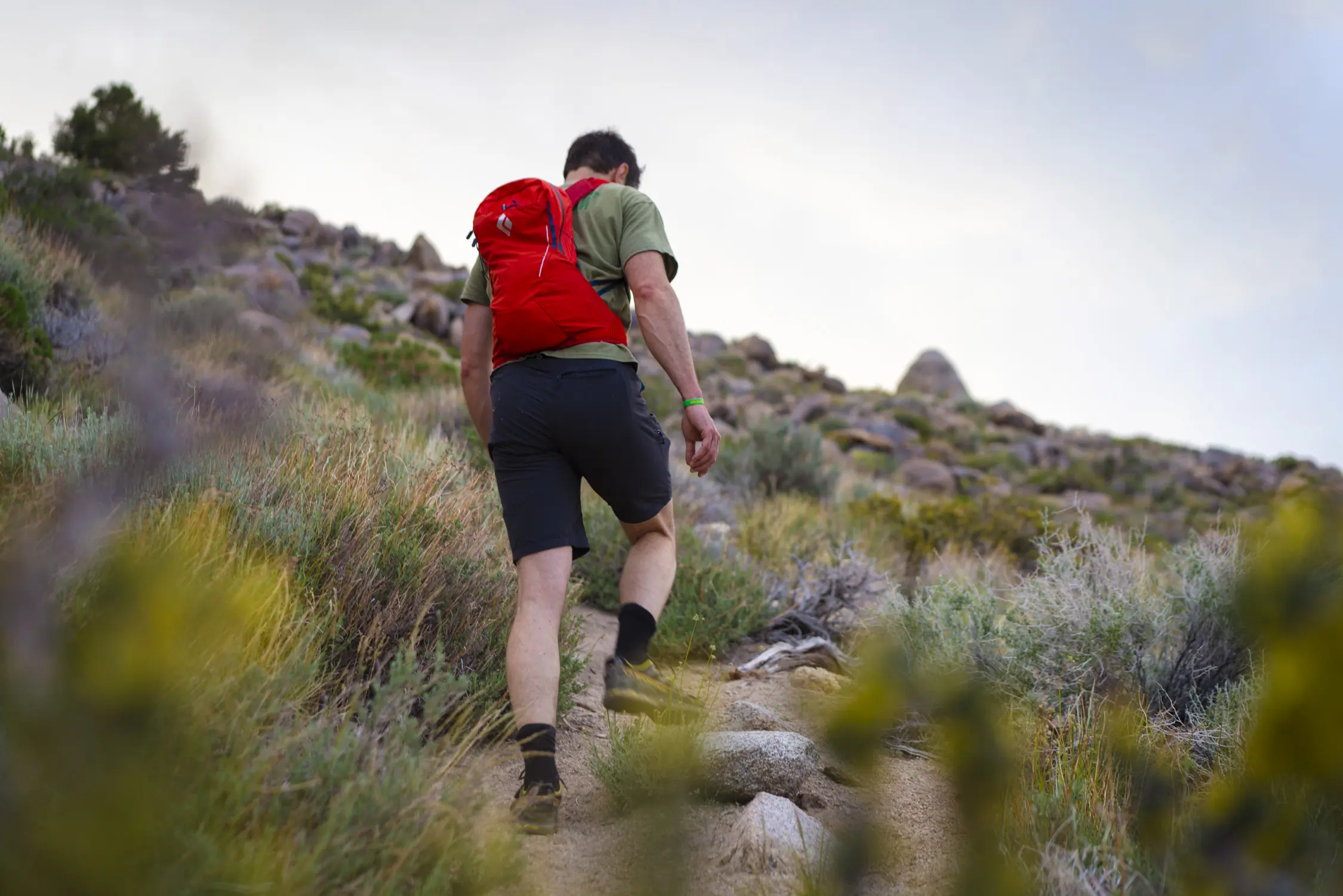



Buyer’s Guide: How to Choose a Daypack
Whether you’re choosing a pack to take you from work to the mountains or a daypack that can fill one specific use, let’s break down the best way to choose the right daypack for you.
Pack Size
One of the most important items on the trail is your pack — it’s how you’ll carry all your gear and support yourself on the trail. For this review, we included daypacks from 15 to 30 L, but that’s a huge range.
Consider what gear you’ll want to carry: the basics like water, a first-aid kit, wind/rain layer, snacks, glasses, and a cellphone. You might also carry extras like your kids’ layers, a doggie bowl, sun hat or sunscreen, camera, trekking poles, and water reservoir.
An 11-18L pack only has space for the essential items, but these are usually a little more versatile for daily use. This is a good size if you’re commuting, going on a shorter hike or bike ride, or travelling fast and light on a long adventure, which the Arc’teryx Aerios 18 is good for.
Meanwhile, a daypack of around 20-30 L, like the Deuter Speed Lite 25, allows you to bring more water for longer trips in hotter environments or extra food and heavier layers if it’s spring or fall. Packs of this size are also better for quick overnights and multi-activity trips like hiking and climbing or short-term travel.
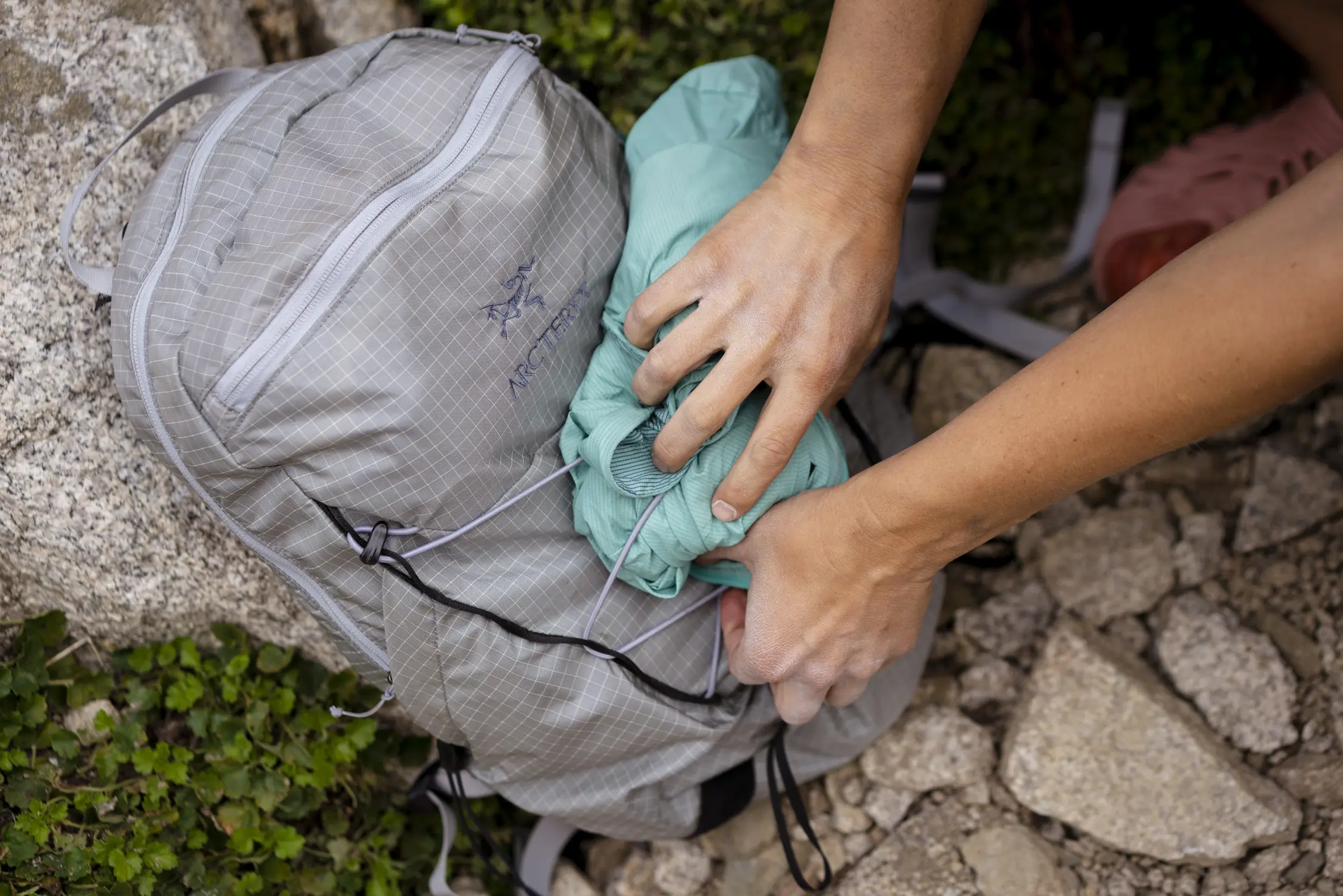



Larger packs can also be a good choice if you’re traveling in alpine terrain and need more space or features— like headlamp pockets, trekking pole sleeves, ice axe loops, a hip belt, and a helmet compartment or exterior stretch pocket.
Although some technical mountain packs like the Black Diamond Pursuit 15 keep it light and small at only 15 L, but with many of the features you look for in a technical mountain pack so you can stay nimble.
Apart from the volume, or carrying capacity, of a pack, there’s also pack sizing for your body. Daypacks are usually one size, as they’re meant to be adjustable and versatile yet streamlined. We had multiple testers of different body types try on these daypacks for comparison.
Any good daypack will have adjustable straps that help with fit. And even though they are daypacks, many have sternum straps or hip belts as well.
If a pack comes in multiple sizes (usually S/M or M/L size ranges or plus or tall sizes), make sure to check the brand’s size chart. Measure your torso or back length and find a pack that will fit your size and height. Look for packs with sternum straps or a removable hip strap.
Frame Styles and Straps
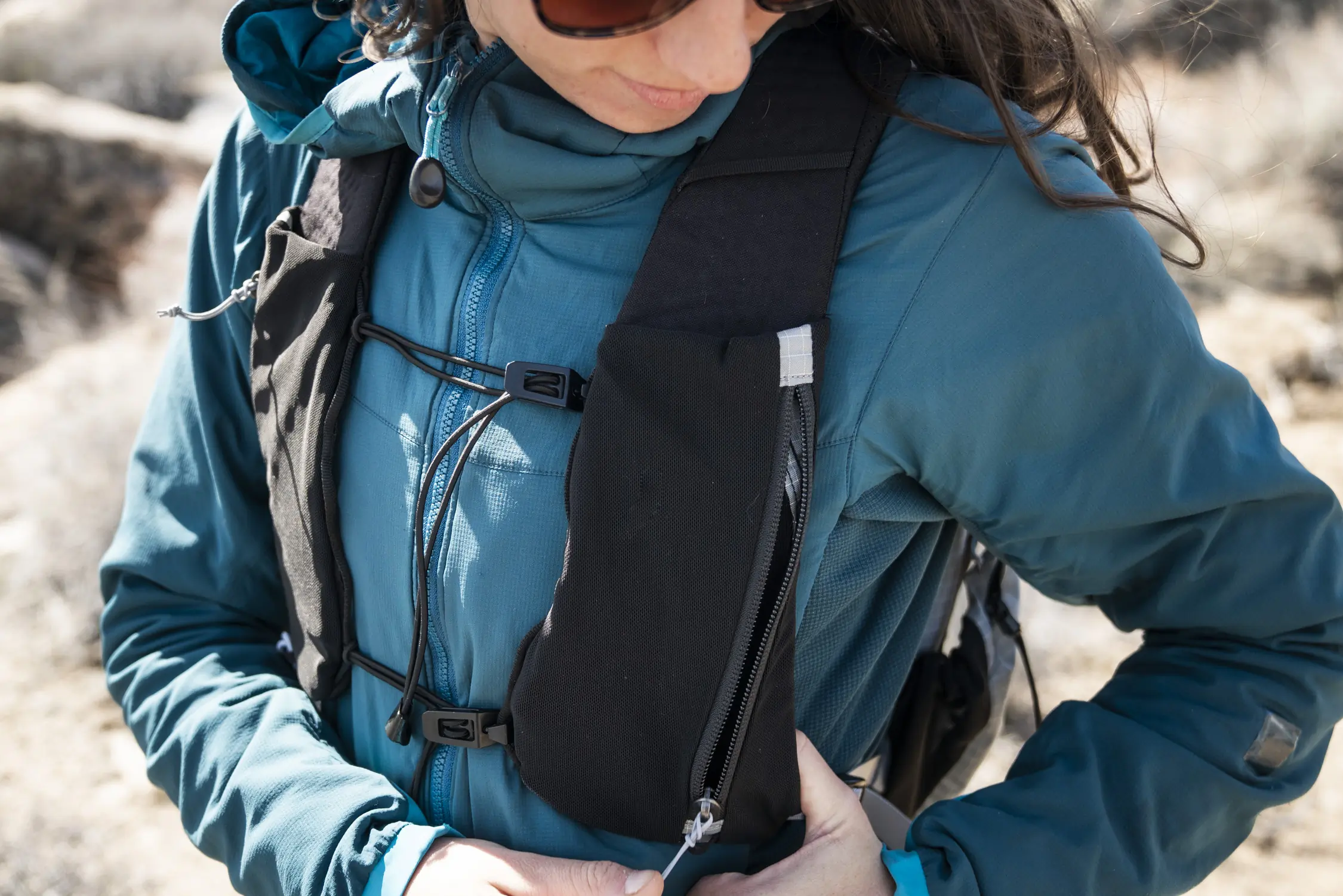



Because the loads they carry are often lighter, daypacks don’t benefit greatly from the complicated frames of larger backpacking packs. More often, foam sheets are employed to provide some rigidity to the back panel and better distribute the weight.
Packs like the Gregory Miko & Maya and the Osprey Talon 22 or Tempest Pro offer the greatest amount of support while remaining frameless. Some packs will also make their foam frame sheets removable, offering a cushioned seat on the go, like with the REI Co-op Flash 22.
A frameless pack will have an upper comfortable limit when it comes to weight, and will need to be packed with care to avoid being poked in the back with your kit. We try to stay below 15 pounds maximum when saddling up a daypack for an extended jaunt.
The addition of a minimal frame, such as the tensioned Derlin U frame of the Deuter Speed Lite 25 or crossed steel stays of the Black Diamond Trail Vista 20, can greatly increase the carrying capacity of a daypack, but when hauling the lightweight loads associated with day trips, it often isn’t a necessity.


Shoulder straps also play an important role in providing support for a day on the trail. These are typically available in three flavors: J-style straps are the original, S-style straps accommodate those with large chests, and running-vest style straps are preferred for light loads and active movement. Look for shoulder straps that provide a good amount of cushioning foam and fit your torso appropriately.
Typically a requirement on backpacking packs, hip belts on daypacks can afford to be less supportive due to the lighter loads they carry. The most minimal style features simple webbing belts and can even be removable, like on the Gregory Kiro 24.
More supportive hip belts incorporate spacer mesh and foam to disperse the weight across the hips. If you’re looking to tack on the miles or just want a more cushioned ride, springing for a full-featured hip belt is well worth it, and you won’t be disappointed by the uber-comfortable one on the Black Diamond Pursuit 15.
Materials
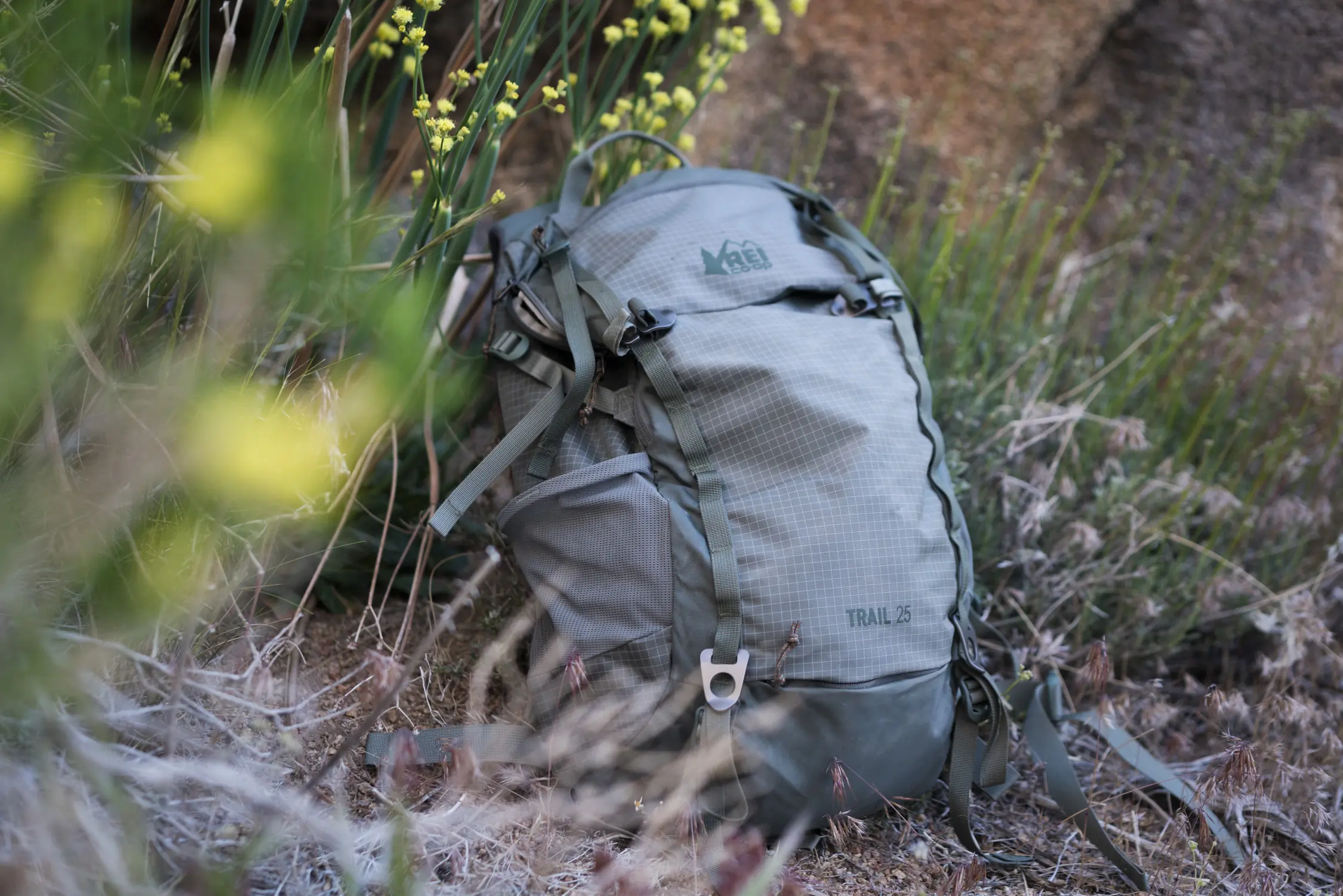



Daypacks don’t often see the abuses of larger bags, and are commonly constructed of lighter fabrics to minimize weight and cut down on bulk. All of the daypacks on our list are tried and tested, and they’ll work for most outdoor activities.
That being said, if you want a pack to put through the paces year after year, consider one with a higher-denier material (like tight-weaved polyamide, polyester, or ripstop nylon). Deniers from 100 to 200 are a great sign a pack will be durable in the long run.
The Osprey Talon 22 does not skimp on quality, and is an example of a pack made with 210- and 420-denier materials. The REI Co-op Trail 25 is also made with recycled materials which is a nice feature to look out for as well.
The material of the back panel can be the difference between smooth sailing and a sweaty back. Daypacks that use spacer mesh and die-cut foam patterns in their back panels will breathe much better than their flat-back counterparts.
Back Panels


Most daypacks will rely on some type of foam and mesh to provide cushioning on your back, as well as promote airflow and breathability. In the pursuit of cutting ounces, daypacks on the ultralight side of the spectrum may exclude this altogether, meaning that perspiration can’t escape as easily.
The upside to this is that these packs compress down impressively, meaning they disappear into luggage or a larger pack.
Because daypacks often lack the bones of a frame to support weight, cushioned back panel design helps to shore up the structure and provides additional support, while keeping the weight close to your back.
A spacer mesh or segmented back panel will keep air moving and, hopefully, your shirt dry. We were impressed by the ventilation provided by the Deuter Speed Lite Pro 25, as well as the Osprey Talon 22 and Tempest Pro daypacks.
Features, Pockets, and Closures




What features does the pack offer? Look for how many pockets the pack has or if it has internal pockets or compartments. These features are great to have when it comes to organizing your gear. Is there an exterior pocket? Are there side pockets?
Things to look for: Our first thought when we examine a new pack in testing is to look for where we’ll store our water source, whether that’s a reservoir or bottle. Also, check to make sure the pack’s internal sleeve will fit your reservoir (which can run anywhere between 0.75 and 3 L).
The second thing we check is the back panel. Almost all the packs that made it on our list have ventilated mesh or breathable back panels — this is a really great feature for almost all adventures.
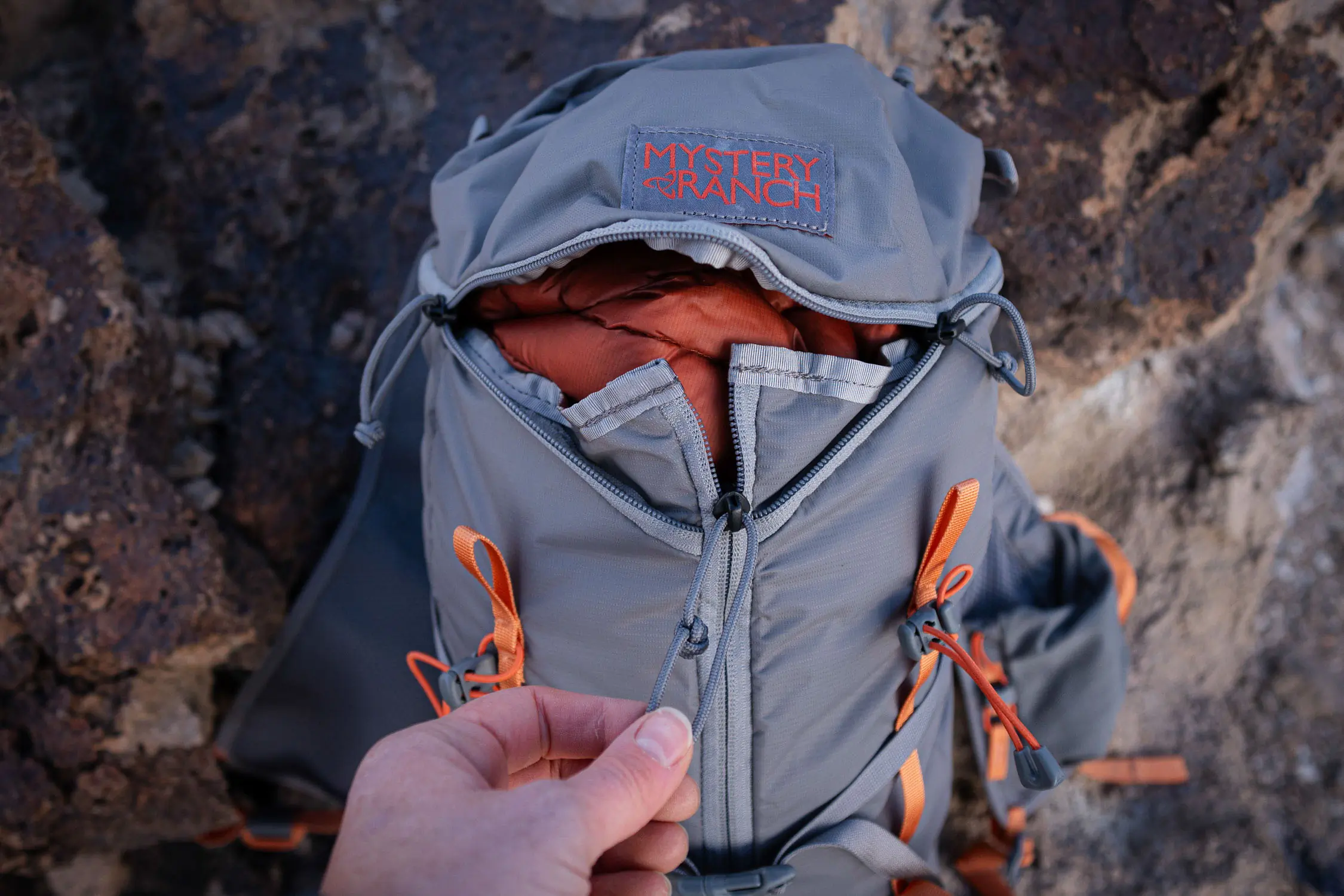



The closure style of a day pack can have a big impact on how quickly it is accessible. Main compartments that open with a drawstring are a snap to pop open and closed, but aren’t the most secure or waterproof.
Roll-tops like the Osprey Downburst offer the best protection from the elements but can be slow to unravel when opened. Zippered closures are seen on the more feature-rich daypacks and can even be watertight. However, they will need to be cared for more, as grit and sand can damage their sliders and cause them to split if neglected.
Sport-specific features, like a bike helmet lashing system or an ice axe loop, will often dictate the best usage style for your daypack. It’s often worth considering what you’ll be using your daypack for the most and purchasing a dedicated pack, or one that is feature-rich and can be used for many different outings.
Some packs will have attachments for trekking poles on the outside, like on the REI Co-op Trail 25, which frees up valuable side pocket space. Some of the more technical packs like the Aerios, Black Diamond Pursuit 15, and Mystery Ranch Gallagator also have pouches on the front of their shoulder straps for water flasks or quick access to your phone or some snacks.
Hydration Compatibility
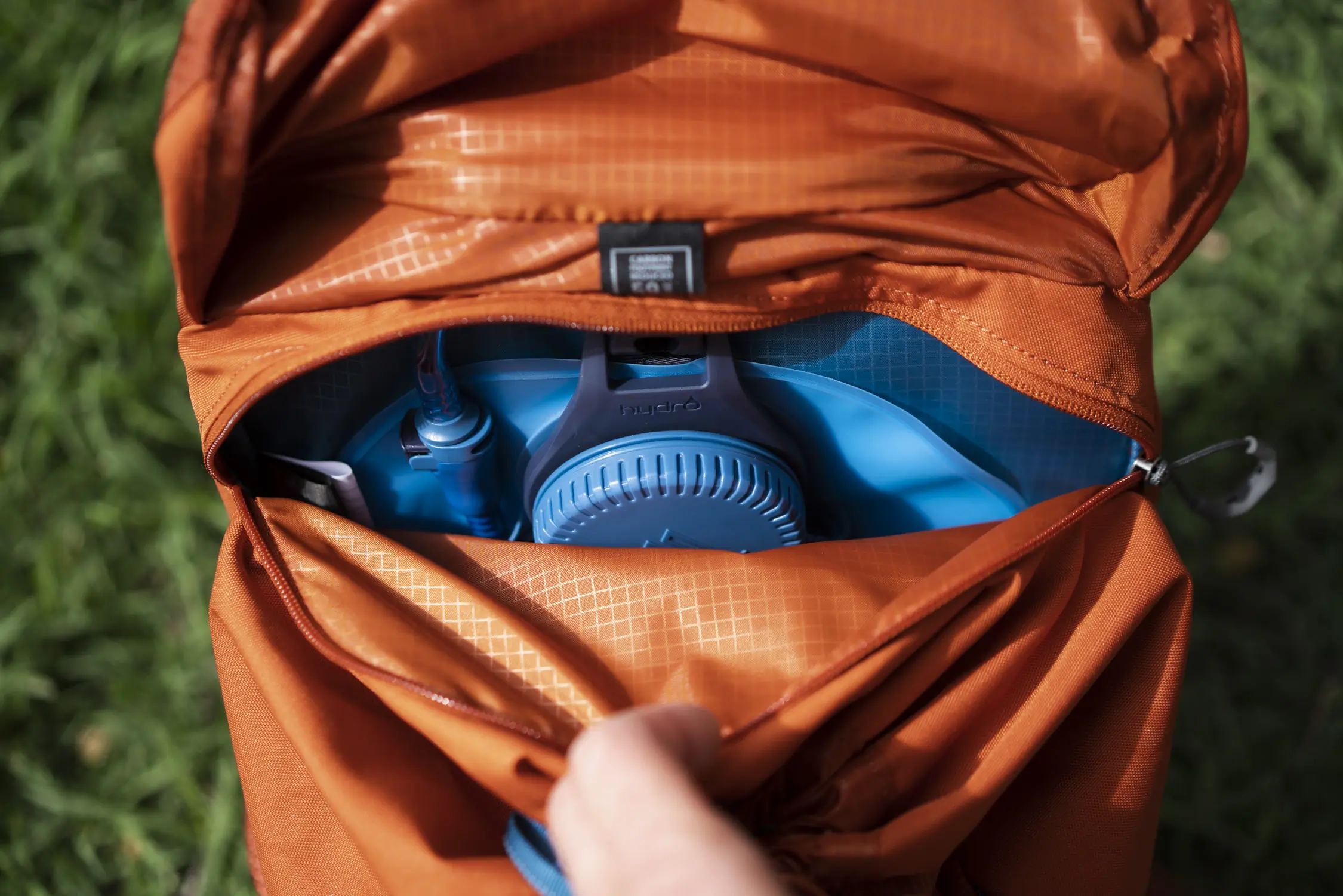



Keeping your water accessible is the best way to ensure your thirst is quenched, and H2O systems like the Platypus BigZip EVO or Osprey Hydraulics Reservoirs make an excellent pairing with a daypack for extended trips. Many daypacks provide hydration compatibility, though not all, so choose based on your expected usage.
Hydration-oriented packs will have separate compartments for bladders, sometimes with insulated sleeves or hooks for securing a bladder, and routing for a hydration tube. Some packs, like Gregory’s H20 Series, have magnetic or quick clip attachments for easy sippin’ on the go. Hydration tube ports allow for drinking tubes to exit the interior of the pack.
You’ll want to check the sizing of your daypack with the size of your bladder. For example, a large 3L bladder might not fit in a 16L pack. See what the brand recommends and check the sizing.
It’s also worth mentioning that water can be one of the heaviest things you carry in a daypack, and choosing a pack with a more robust suspension system to accommodate it will keep your back happy. A pack without a frame isn’t likely to haul a full 3 L of water nearly as well as one with a more robustly supportive frame.
Waterproofness
Do you live in a climate where there’s lots of rain? Are you looking for a daypack that’s more durable and can stand up to travel and use in different places? Check the waterproofing on the pack.
Look for a DWR coating, polyamide, or PU abrasion resistance coating (these packs will be more durable), taped seams, roll-top closures, and waterproof or sealed zippers. Daypacks that incorporate a number of these features, like the Osprey Downburst 36, will have a high level of waterproofness and keep afternoon storms at bay.
You can also employ a pack cover or liner to keep items like an insulated jacket or electronics dry for when you need them most. Some packs, like the Osprey Hikelite 26, even come with integrated pack covers that deploy from a hidden pocket.
Don’t forget to check the quality of the zippers and zipper pulls as well as the overall construction of the pack. Also, check the material on the pack bottom for durability.
Women’s-Specific Daypacks
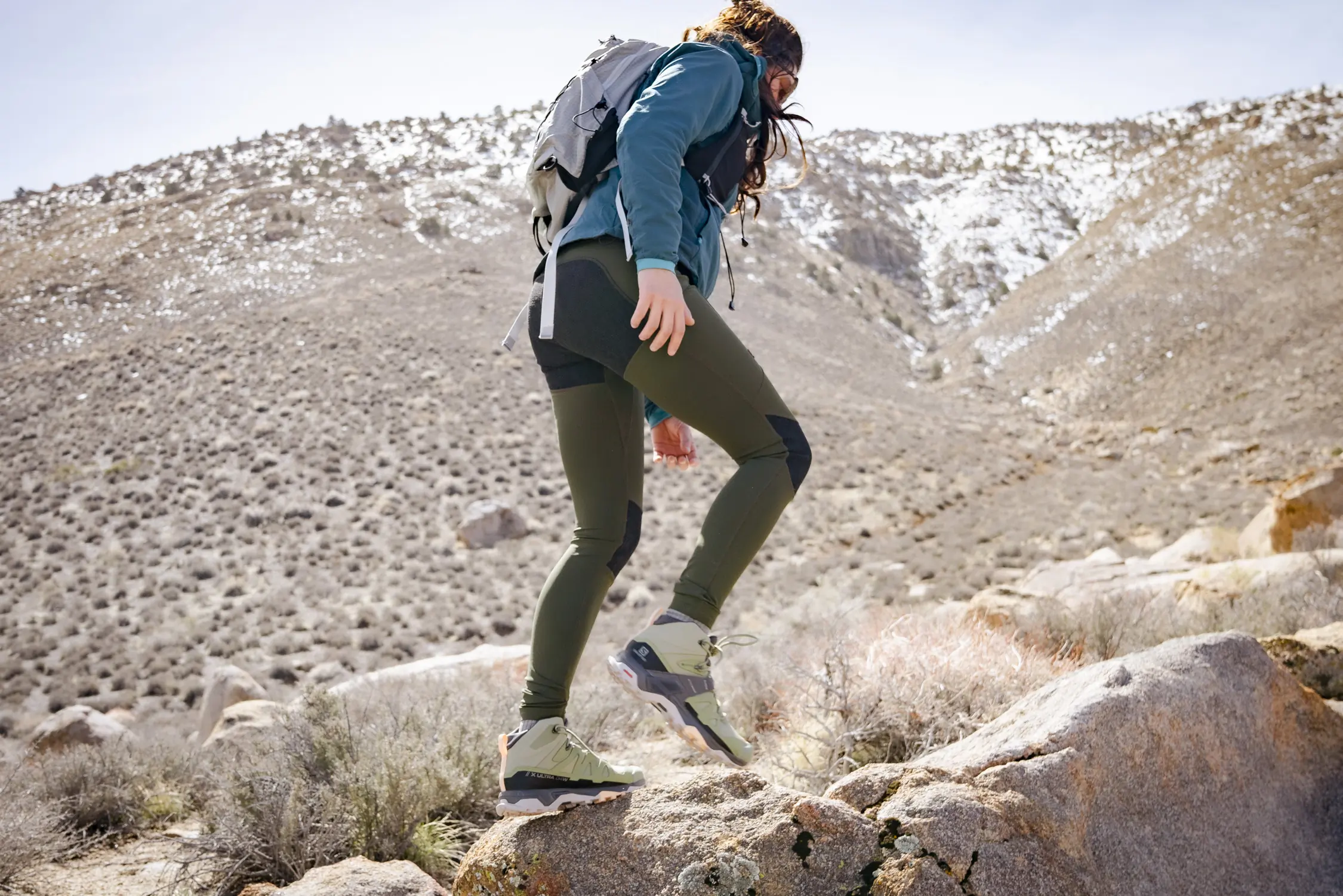



Women are built differently than men. Women’s packs tend to have a shorter torso length, narrower shoulder-width straps, and different hip measurements to reflect that. For some, having a women’s pack makes all the difference.
Unfortunately, many smaller volume daypacks are often only available in one unisex size, which means you’ll get less of a customized fit. Larger volume daypacks tend to see increased loads, and some on the market will be offered in a Small/Medium, Medium/Large sizing, or include a women’s-specific model.
Be sure to check to see if a brand offers a pack series in men’s- or women’s-specific, and see which measurements or size offerings will best fit you. The pack we zeroed in on as the best women’s-specific was the Osprey Women’s Tempest Pro. Black Diamond also makes a women’s and men’s specific version of the Black Diamond Pursuit 15 with different fits and color schemes.
Price & Value
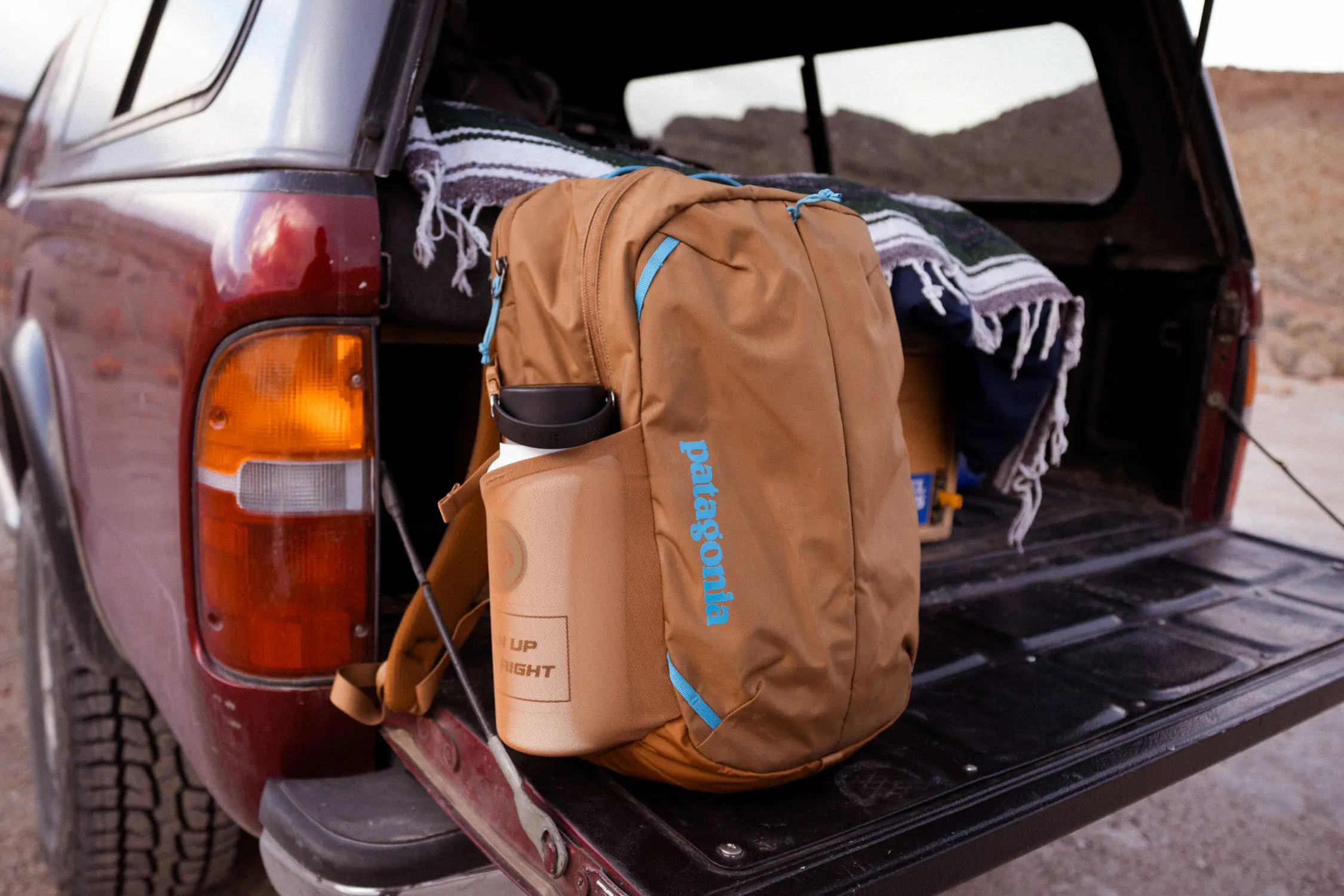



Daypacks run the gamut in terms of cost, from budget-minded sacks to high-end bags for in-a-day adventures. A good rule to follow is the broader your horizons, the more you’re likely to spend. Additional features add up quickly, and the daypack that can do it all certainly comes with a price tag. More budget-minded options will also likely have a limited lifespan, so treat them with care.
Budget
For less than $100, you can purchase a daypack like the REI Co-op Flash 22 ($60), Salomon Trailblazer 20, Mystery Ranch Gallagator, and the Osprey Hikelite 26 Pack.
These daypacks encompass a wide variety of styles, from the more pared-down Flash 22 and Luzon 18L, to the substantial Trail 25 and Gallagator. These budget packs will satisfy the needs of many casual hikes and commuters without breaking the bank.
Mid-Tier
The $100-$150 range will buy you some more technical packs, made with slightly higher-quality materials and have more specific features. In our review, this encompasses the Deuter Speed Lite Pro 25 ($130), Patagonia Refugio, and Gregory Miko & Maya. These packs are more specific in their utility or come with extra features like a laptop sleeve or rain cover.
Premium
For $150-$200, you can buy daypacks made with high-quality materials, with the features and qualities found in larger backpacks but in a smaller package, or even more technical for extreme outdoor pursuits. It is uncommon for daypacks to cost this much, but the Black Diamond Pursuit 15, Osprey Tempest Pro 20, and Osprey Talon 22 all fall into this category.
All of these packs are made with burly materials such as high-denier ripstop nylon, and have a high attention to detail with features such as waterproof zippers, contoured harnesses, or highly breathable back panels.
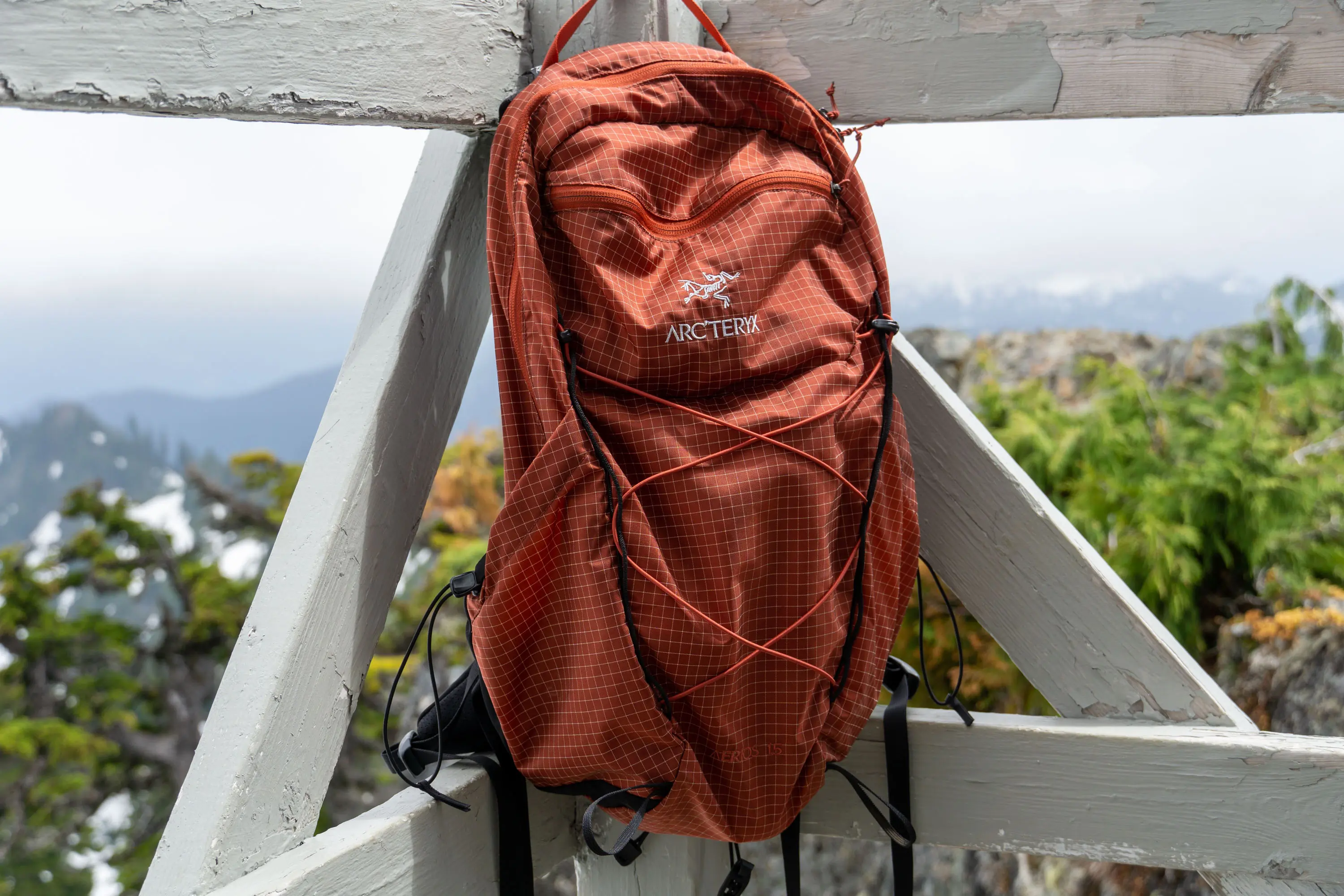



Frequently Asked Questions
The best daypack is hard to define because the sizing will vary based on your needs. Some days, we’ll reach for our trusty 22L REI Flash. On other days, we might need a 24-30L pack depending on the activity.
That being said, the Osprey Talon 22, REI Co-op Trail 25, and Black Diamond Pursuit 15 packs were some top staff favorites.
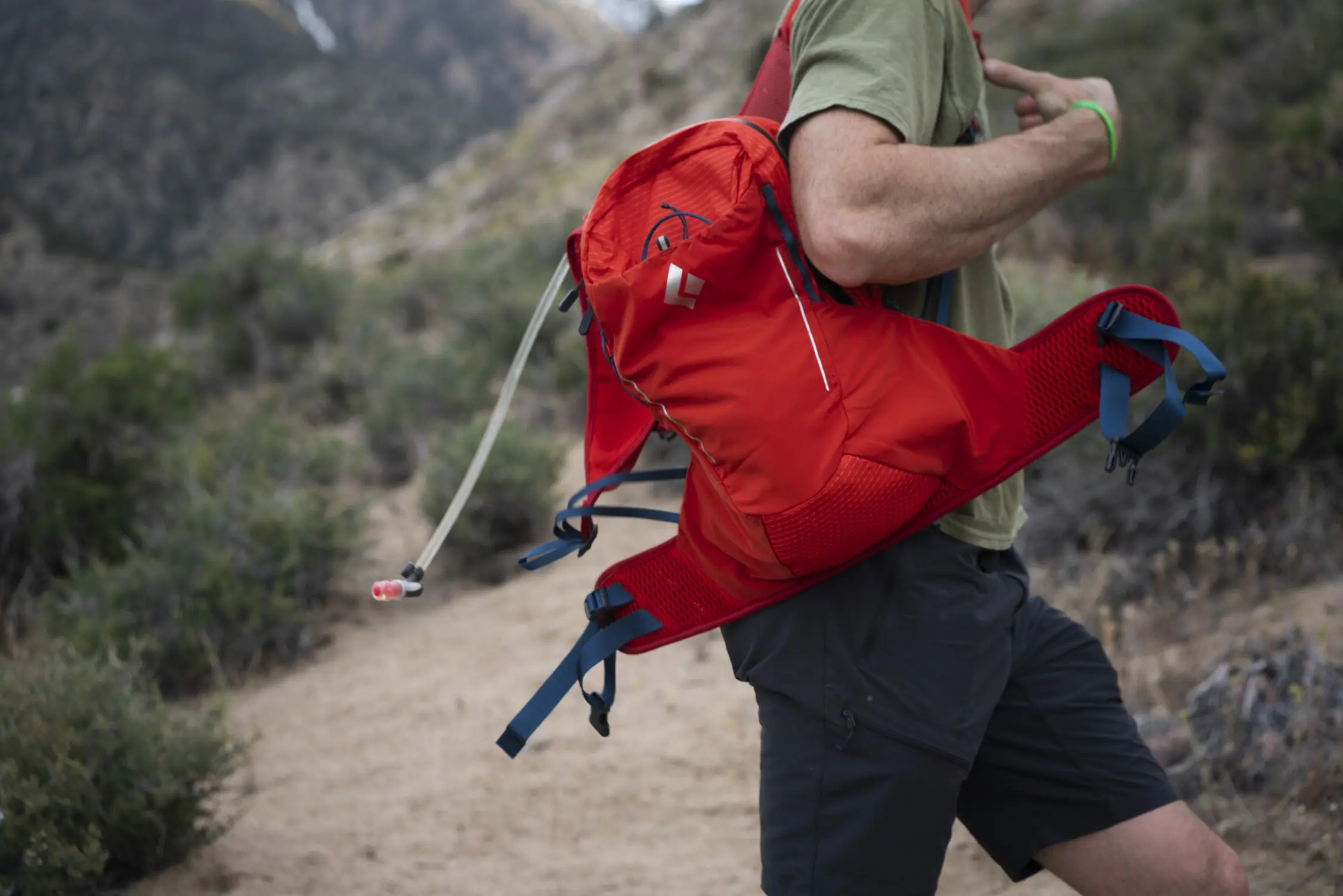



Simply, size. A daypack is meant to comfortably carry all of the essentials you might need on a daily outing and are typically between 12 and 30 L. A backpacking pack will have additional space to accommodate all of the equipment needed for an overnight trip or a more technical outing like rock climbing.
As we mentioned in the intro, you’ll want a 15-30L day pack for hiking. Any larger, and it will be a heavier load to carry; any smaller, and you won’t have room for the 10 essentials. Based on experience and what’s on the market, 20-24L packs tend to be the most popular choice.
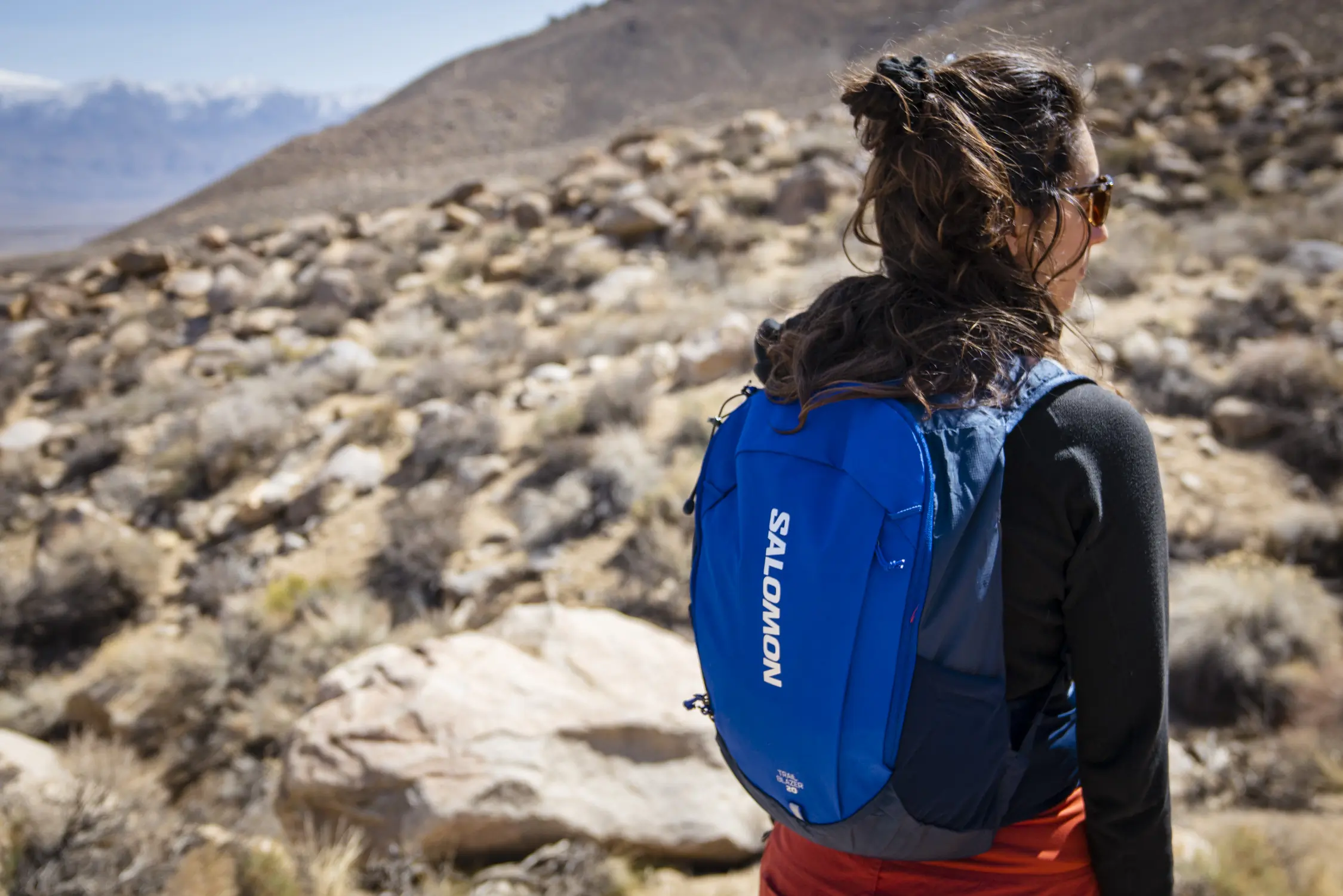



Great question — we’ve got an article on this exact topic, with a handy, comprehensive list you can even print out!
But you can expect to always start with the basics: extra layers or a rain layer (depending on the season), water, food, a small first-aid kit, and sun protection.
For the daypack itself, look for durable — maybe even water-resistant — fabric, a breathable back panel, straps or loops for securing gear, and a good mix of internal and external pockets.
Other features that are great to have on a daypack are a hip belt, sternum strap, key clip, hydration sleeve, and attachment points for trekking poles.
Now that you have all the tools you need to choose the right pack, get out there and enjoy the outdoors!


The Best Backpacking Backpacks of 2026
Head into the backcountry with the best backpacking backpacks of 2025. From budget-friendly options to ultra-comfortable picks, we’ve got you covered.
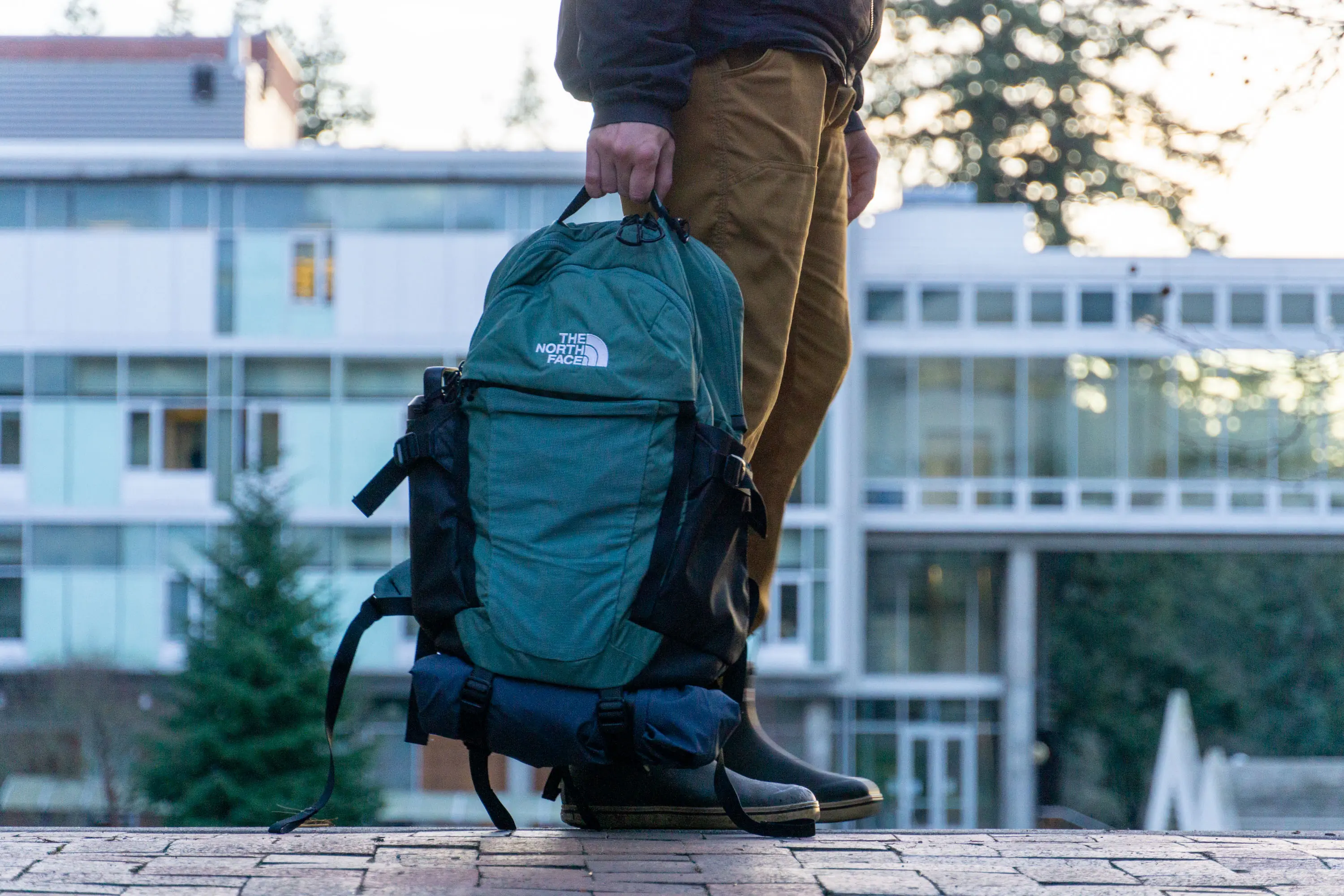

The Best Backpacks of 2026
After shouldering the best — along with the rest — we’ve found the greatest backpacks for any task.
